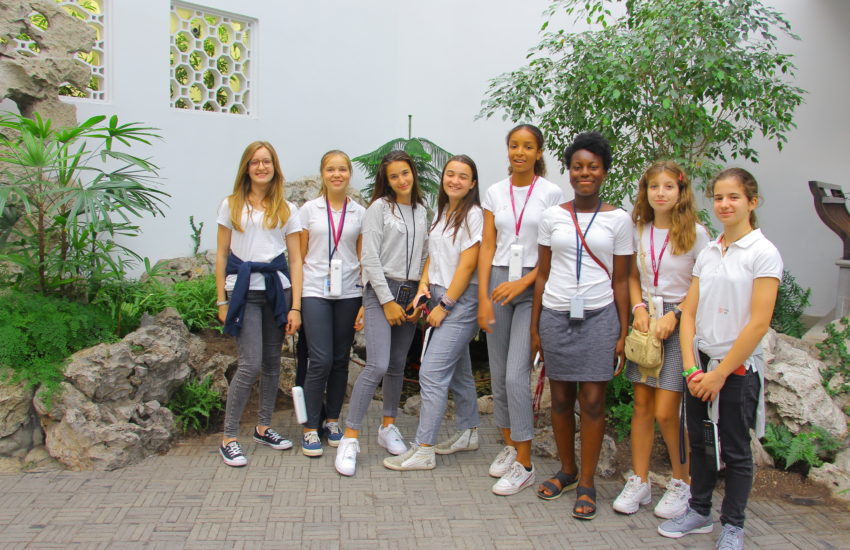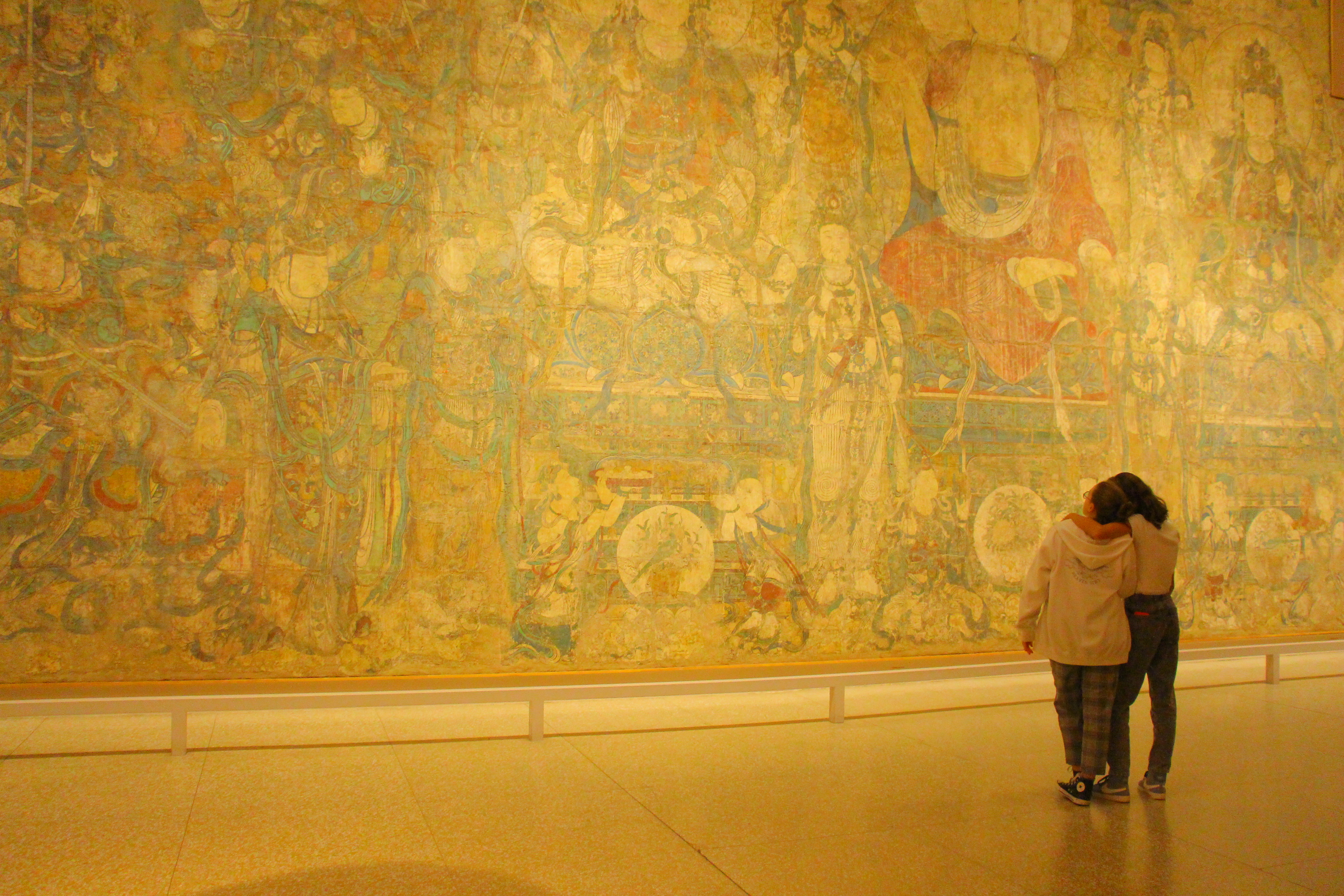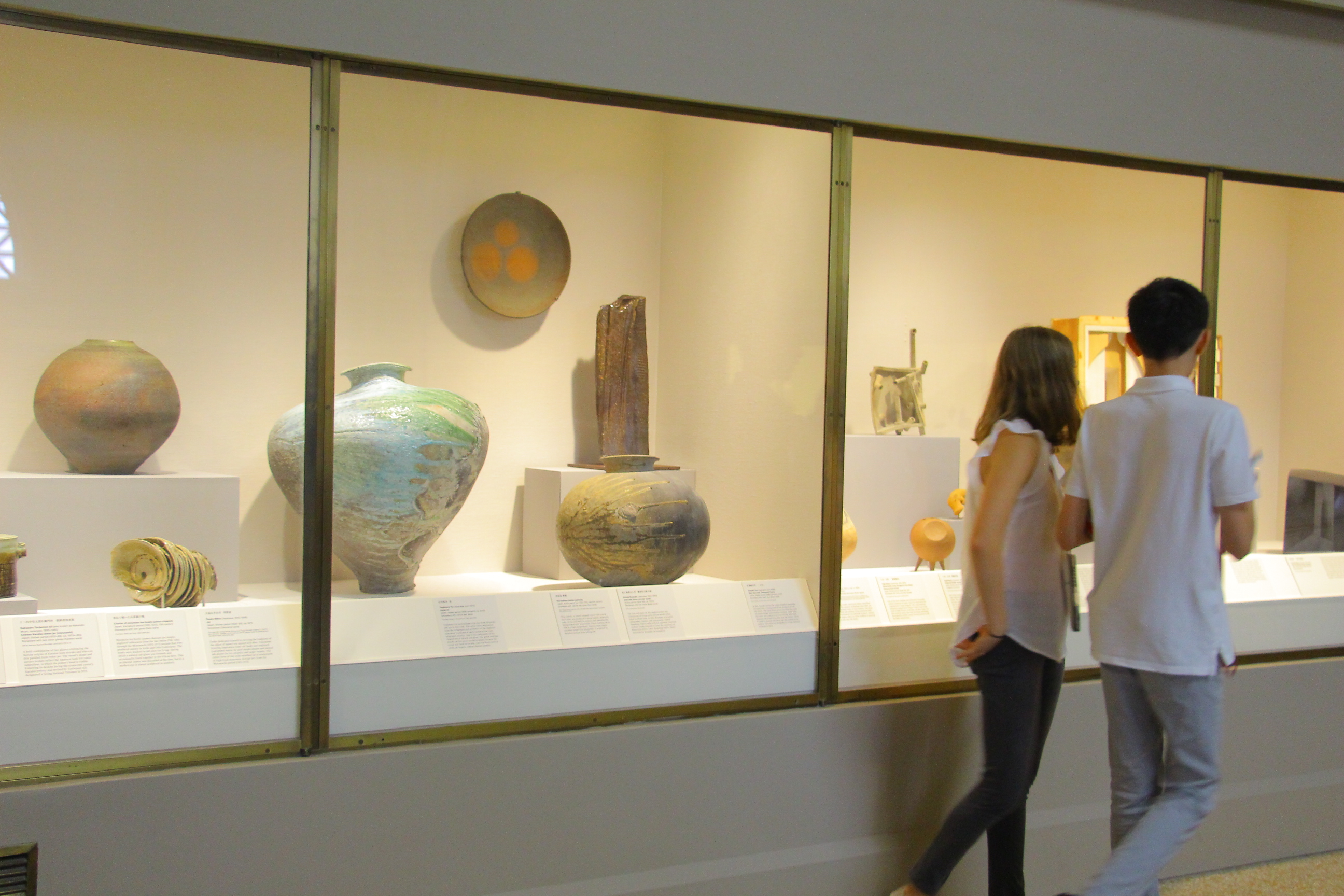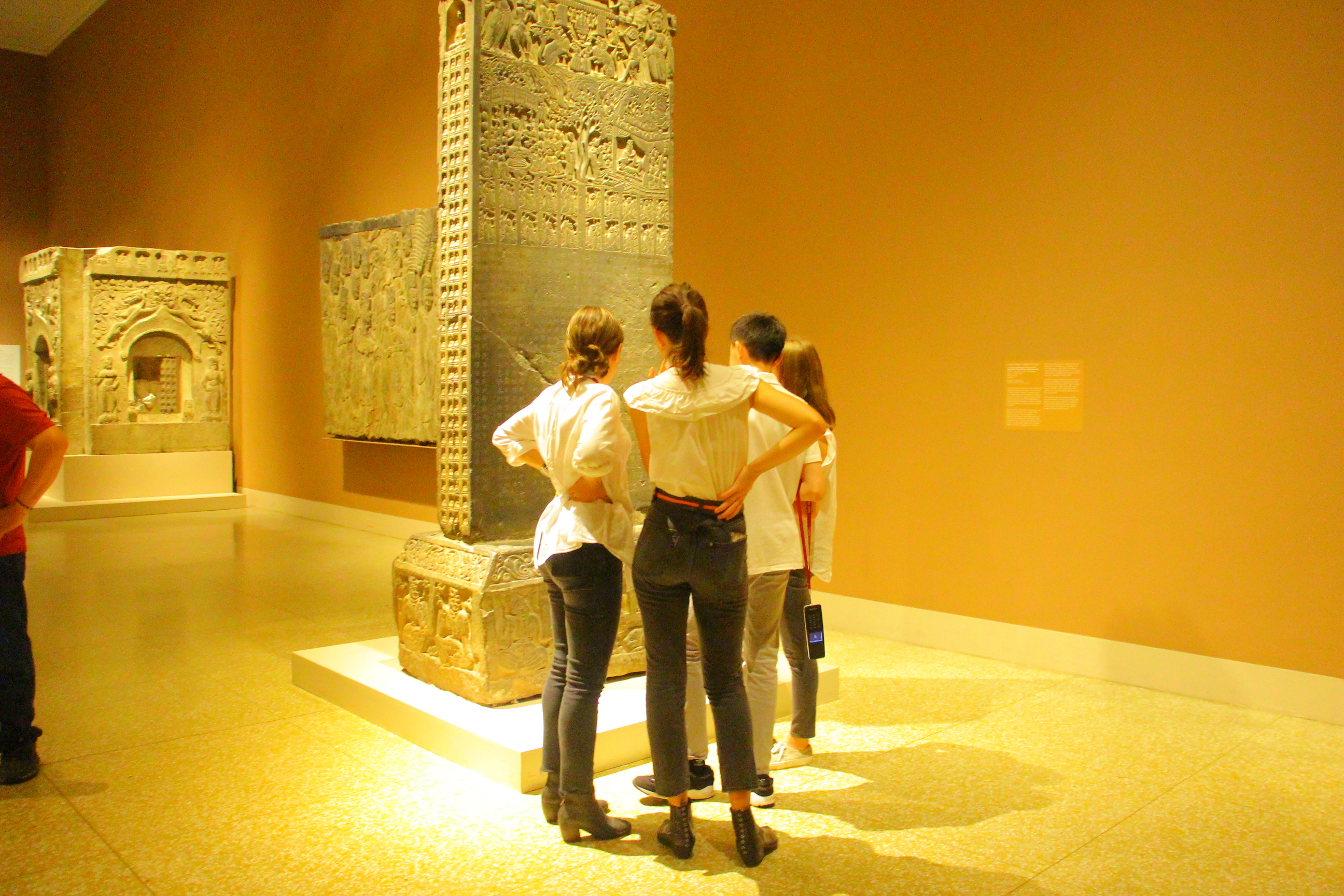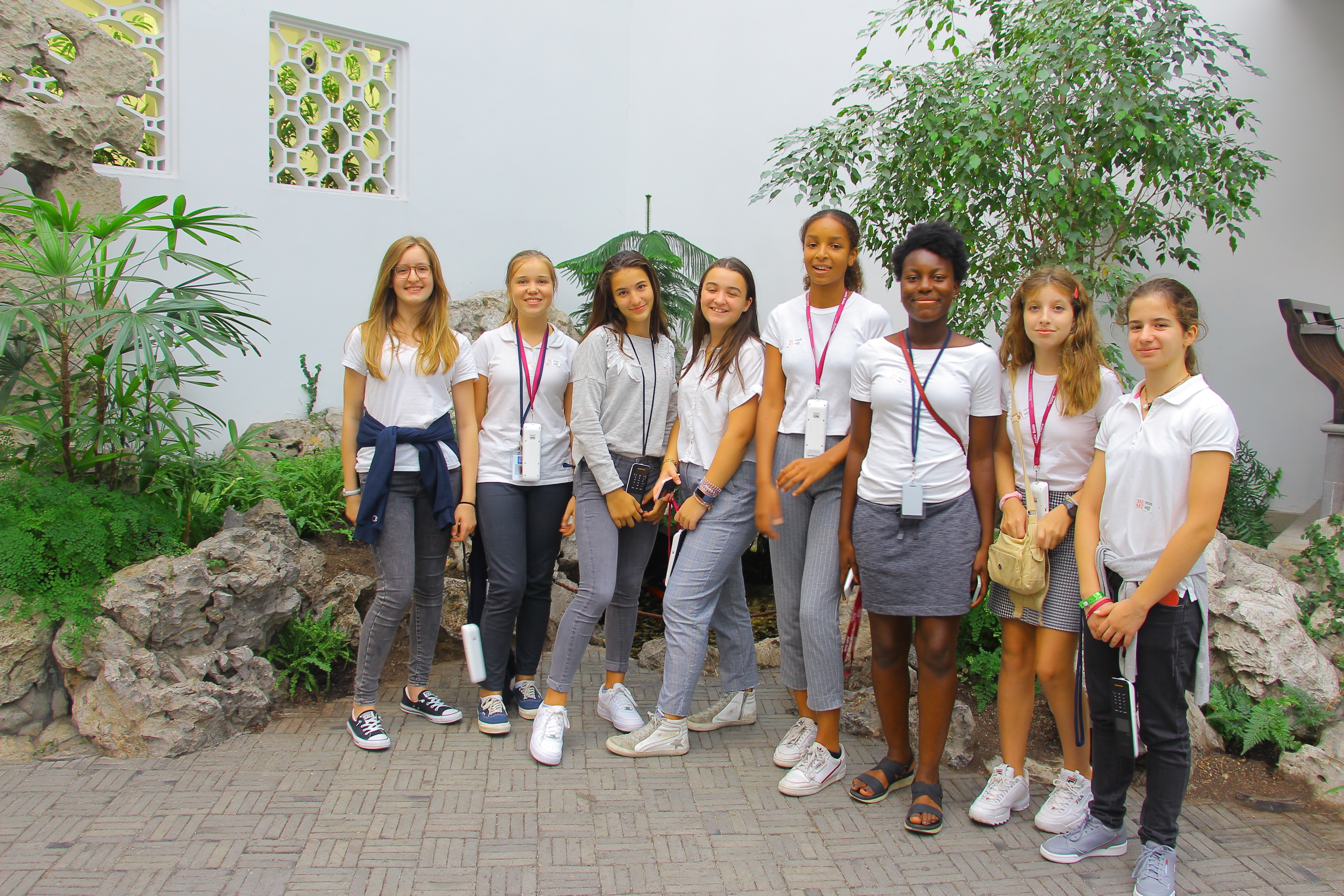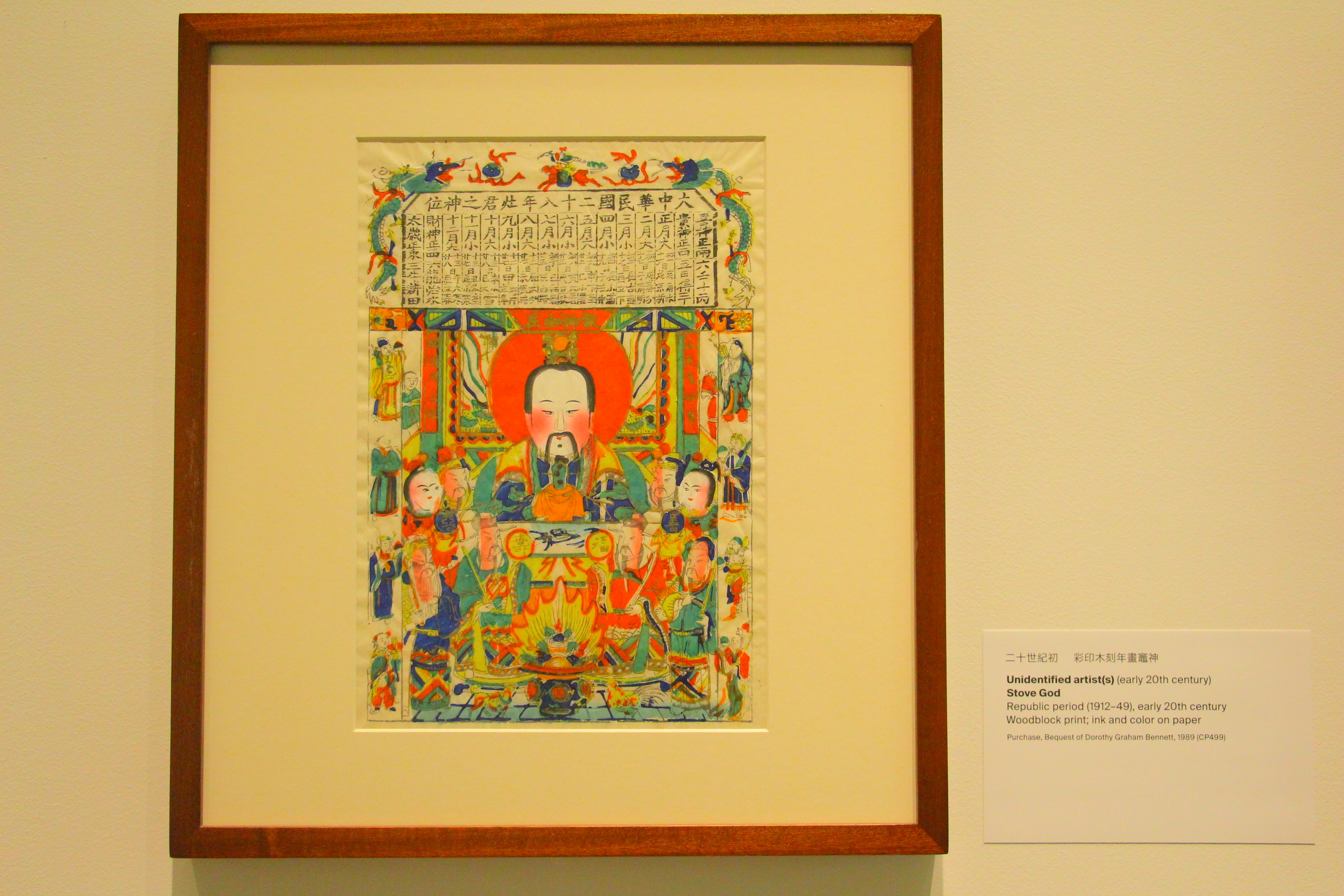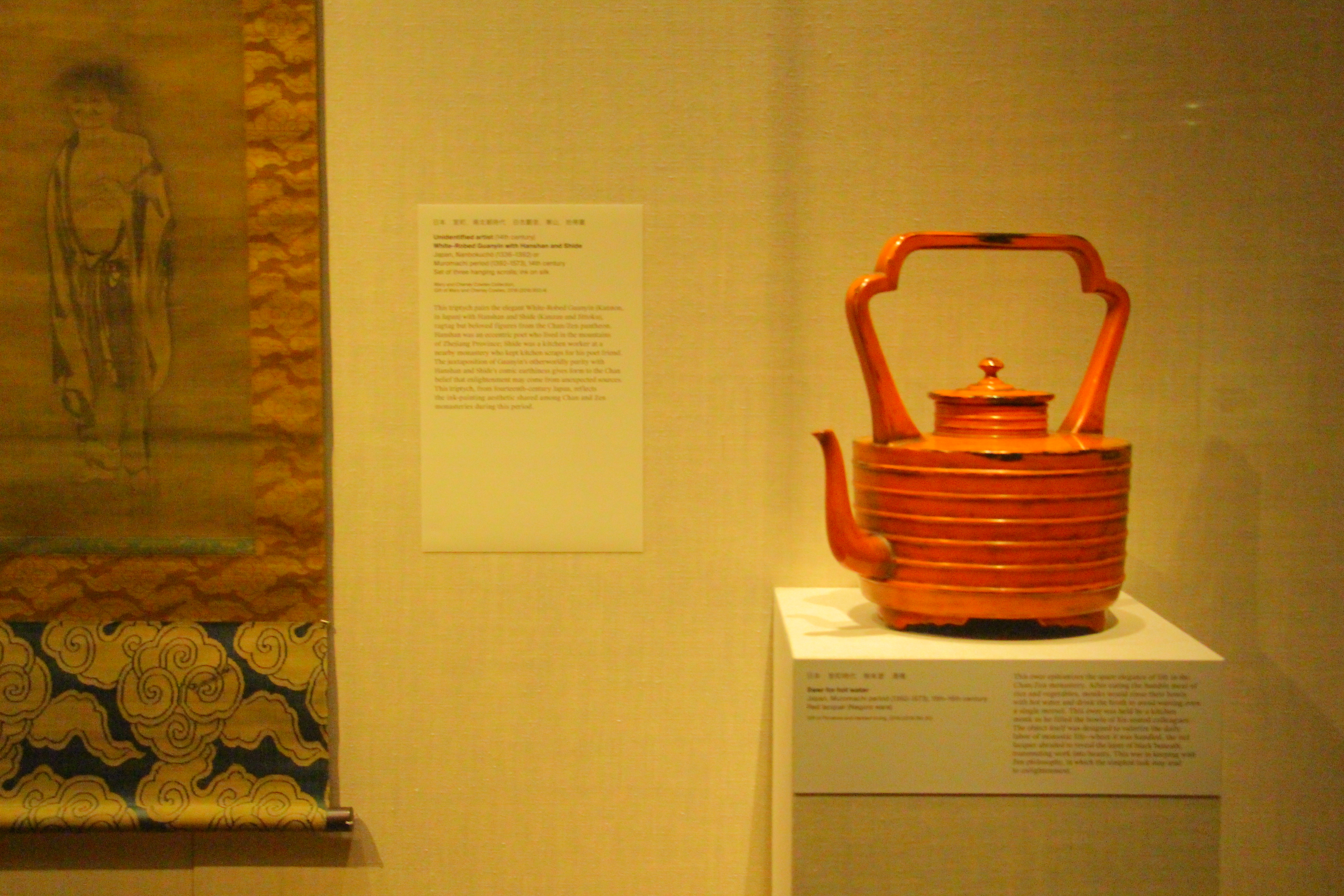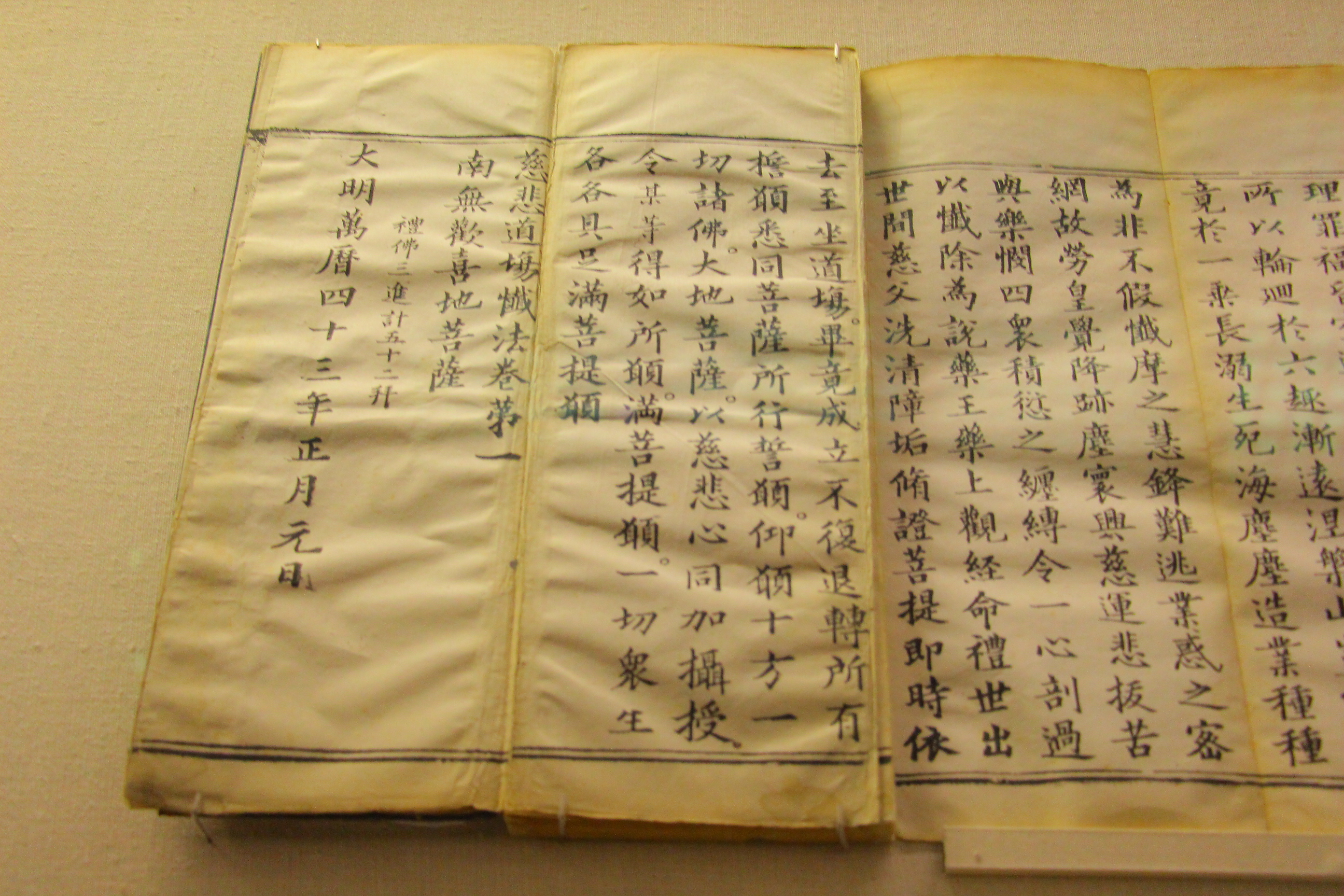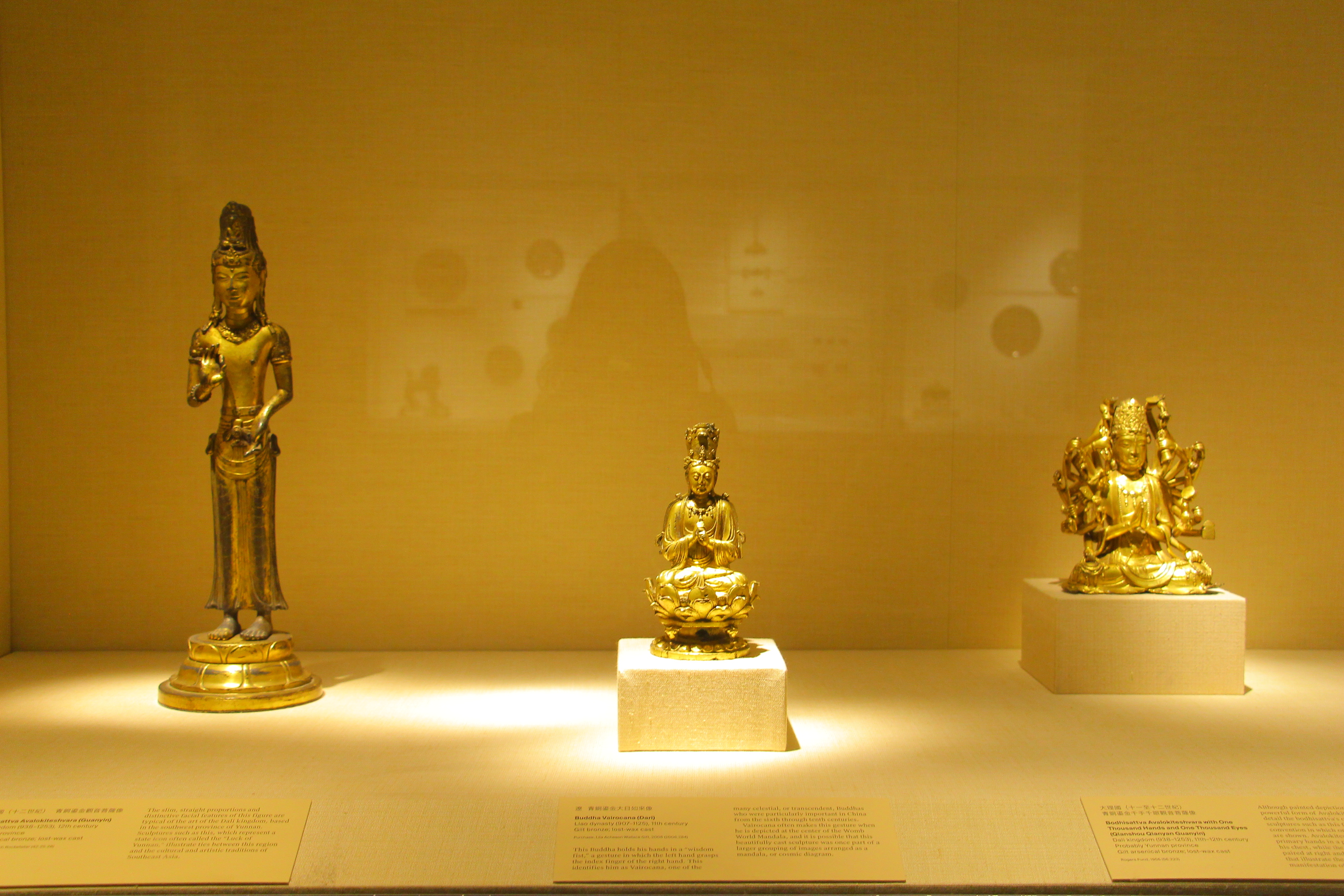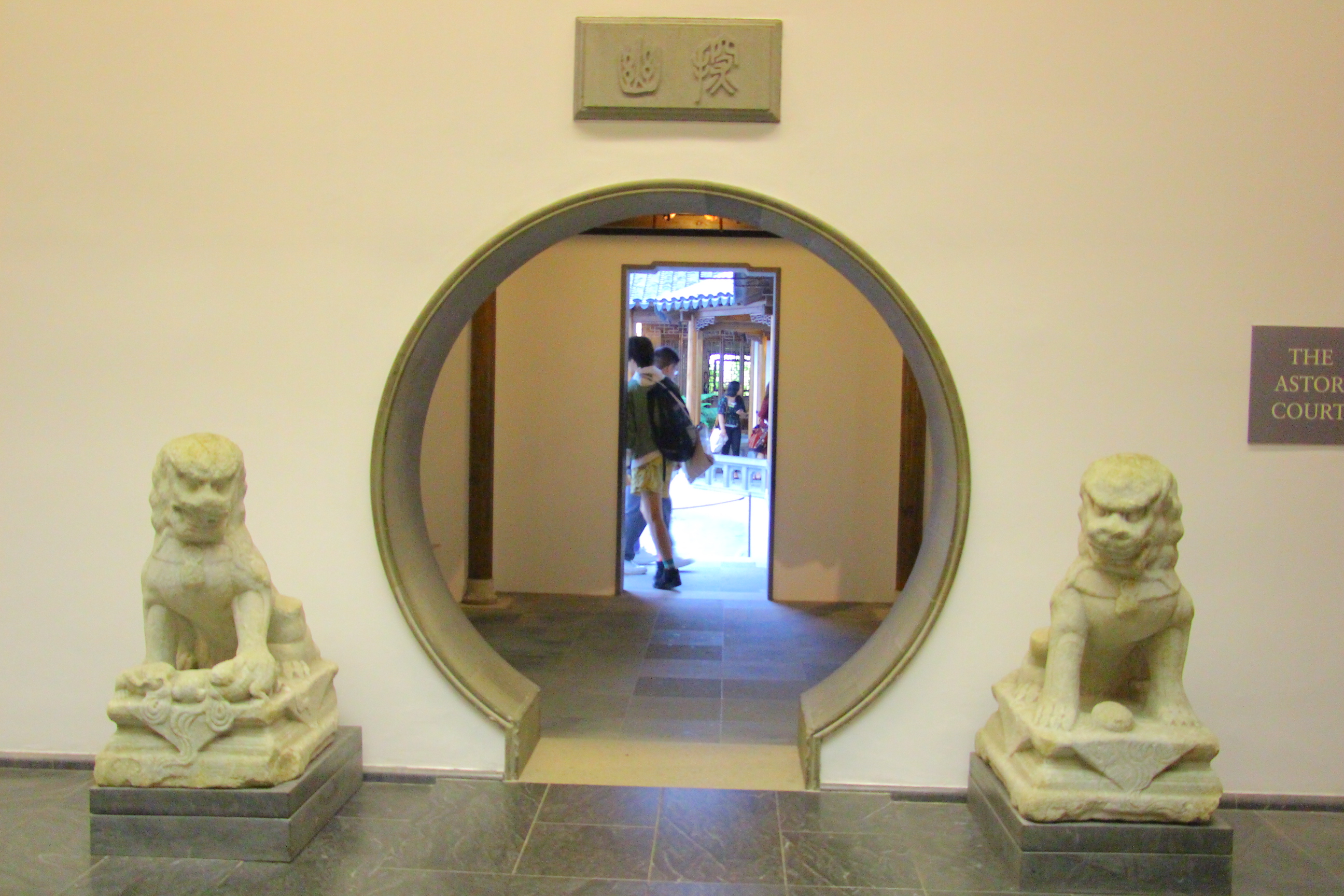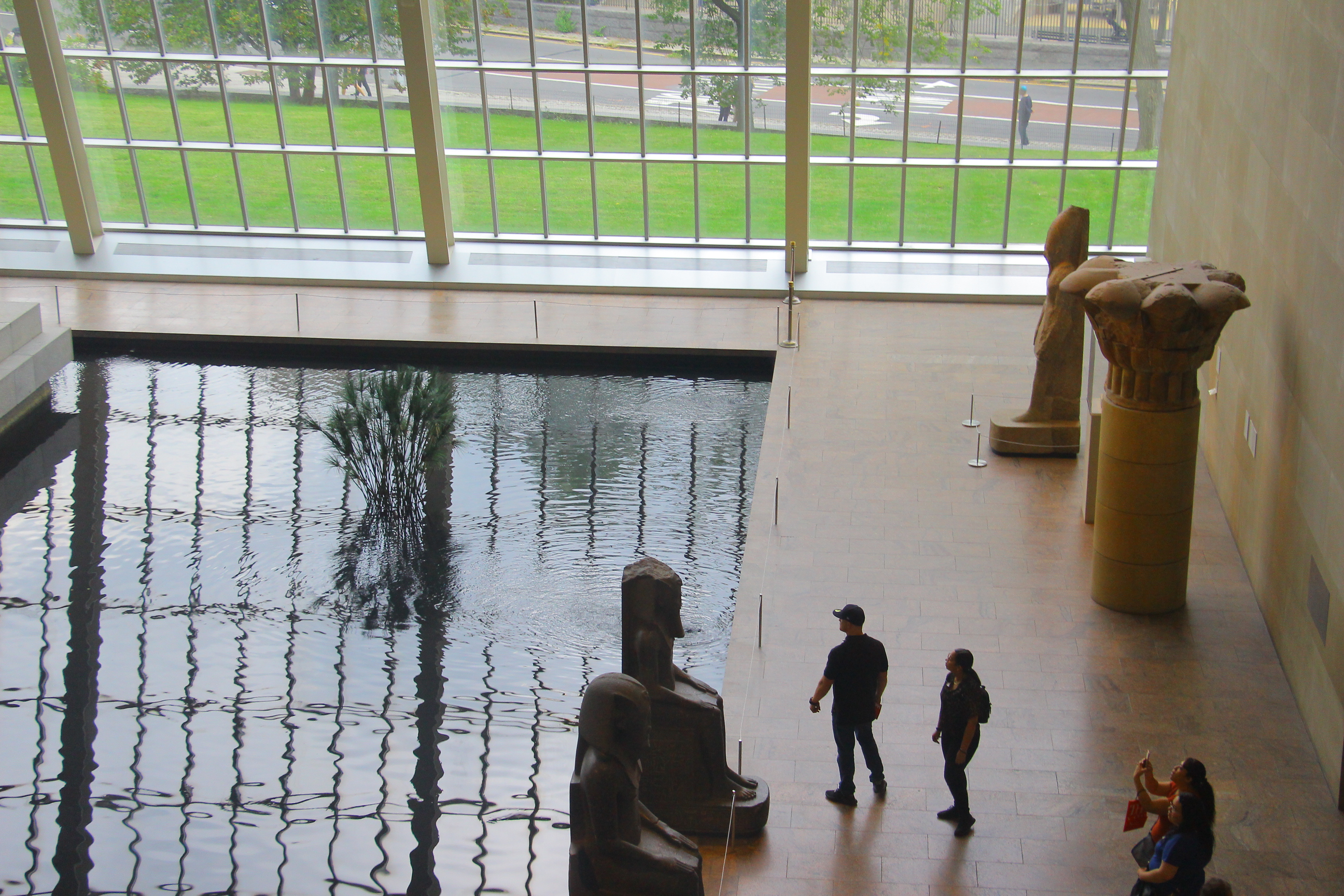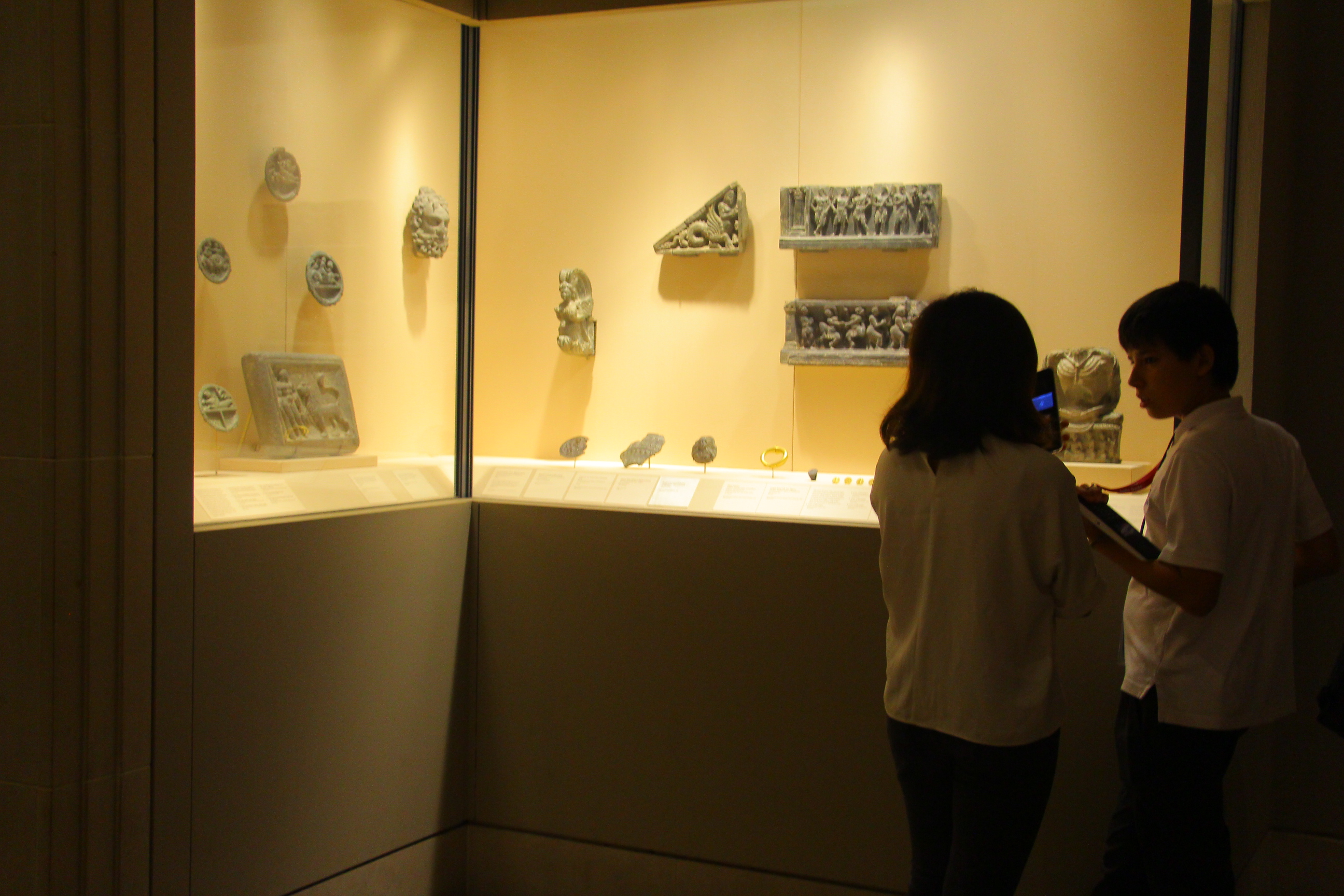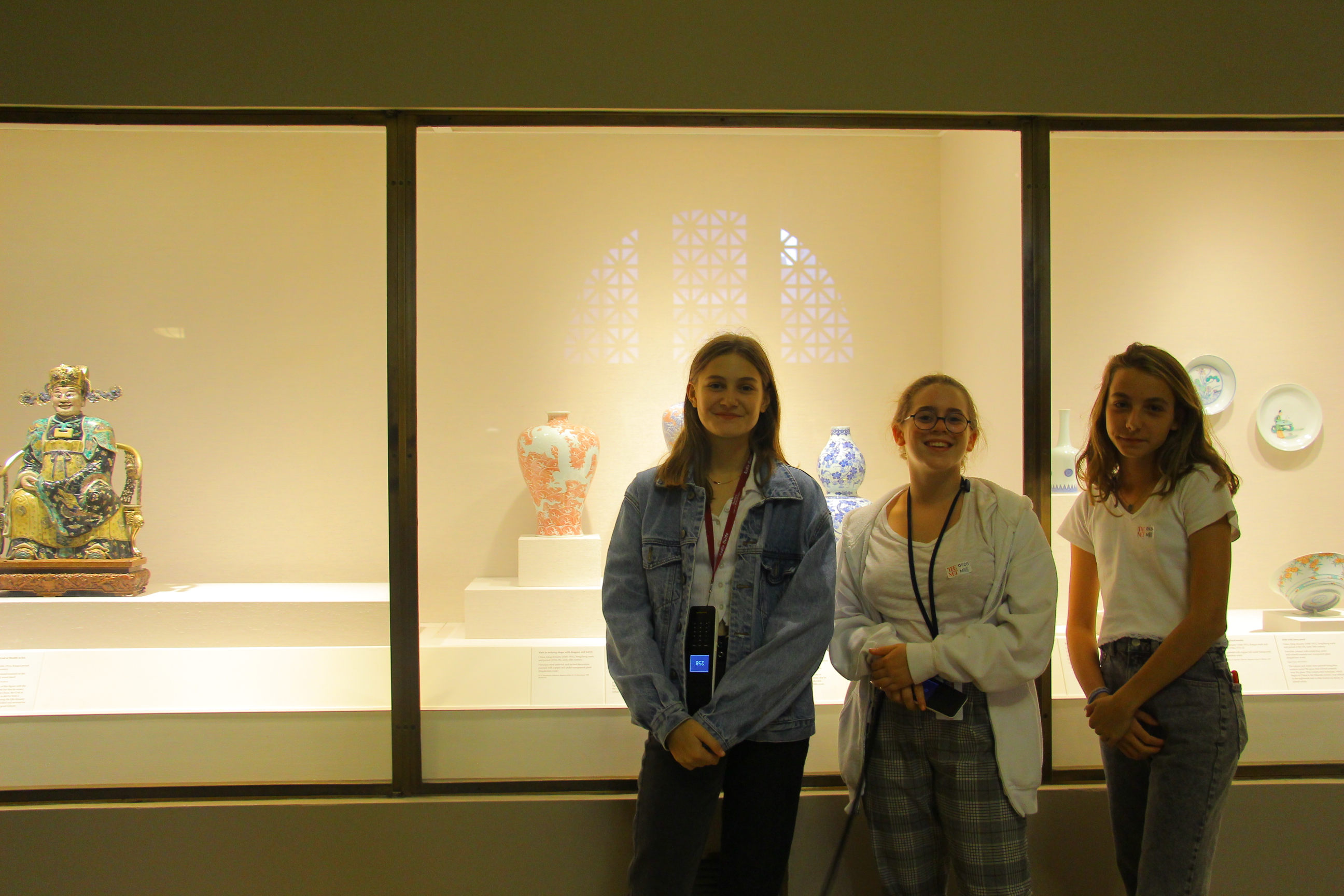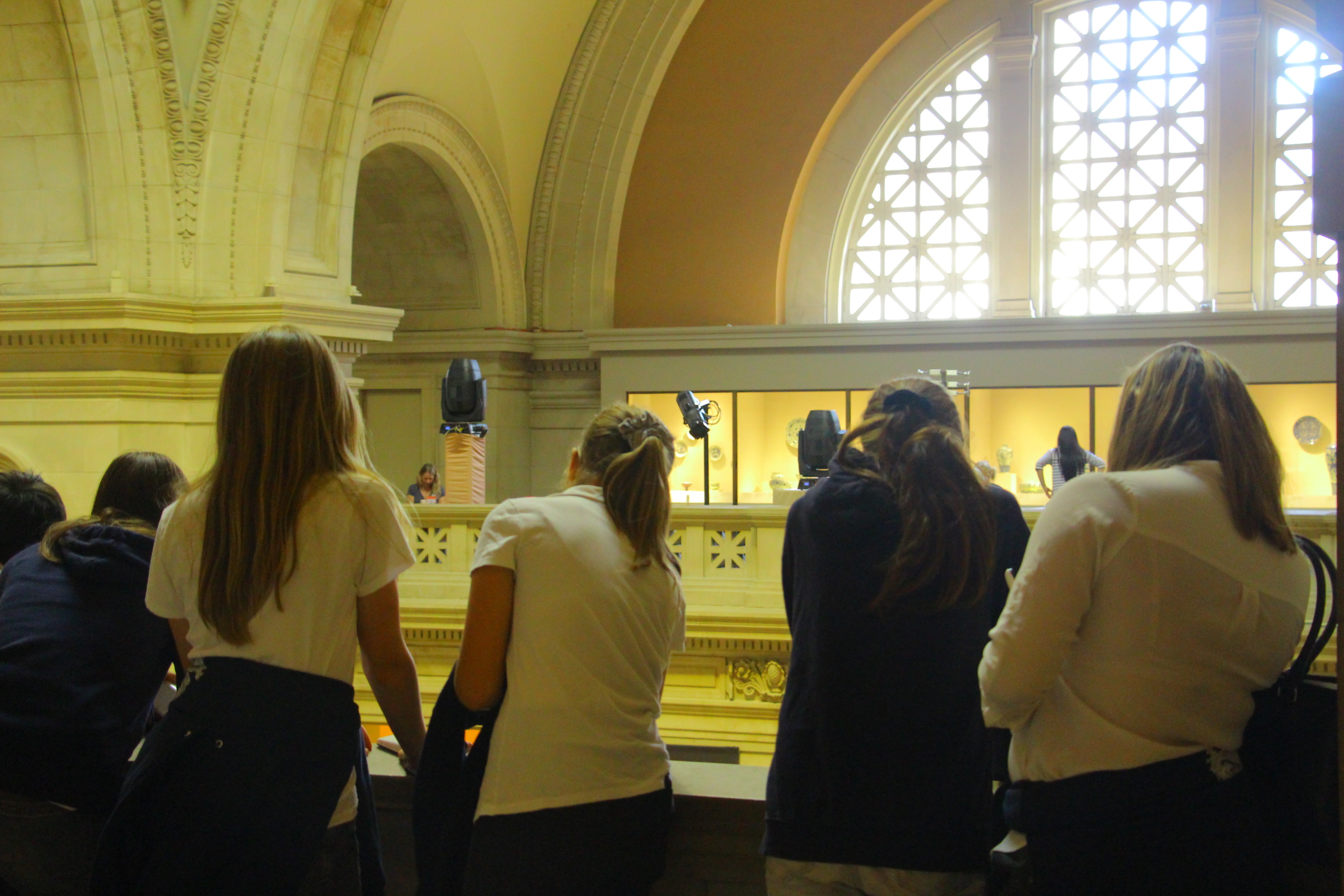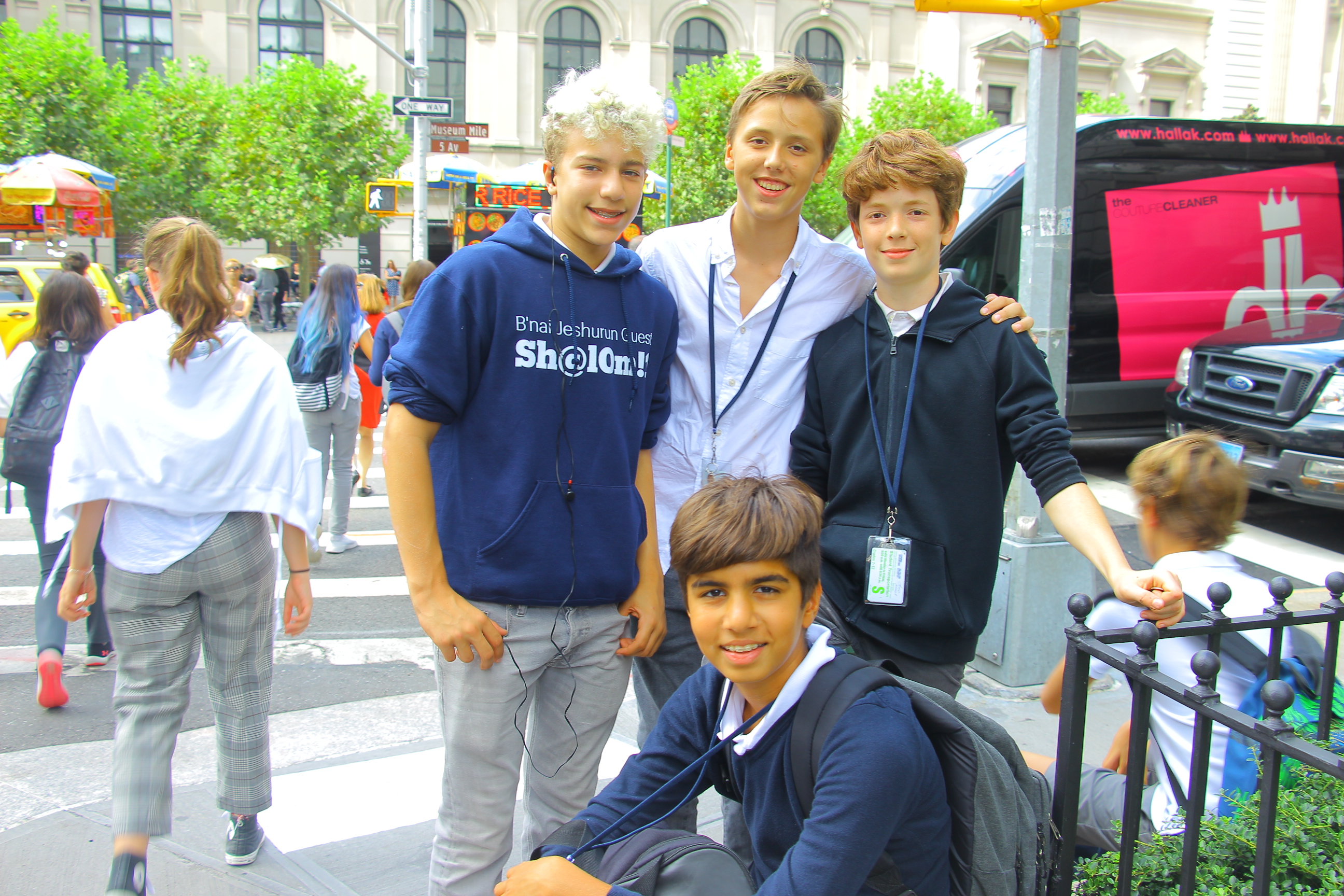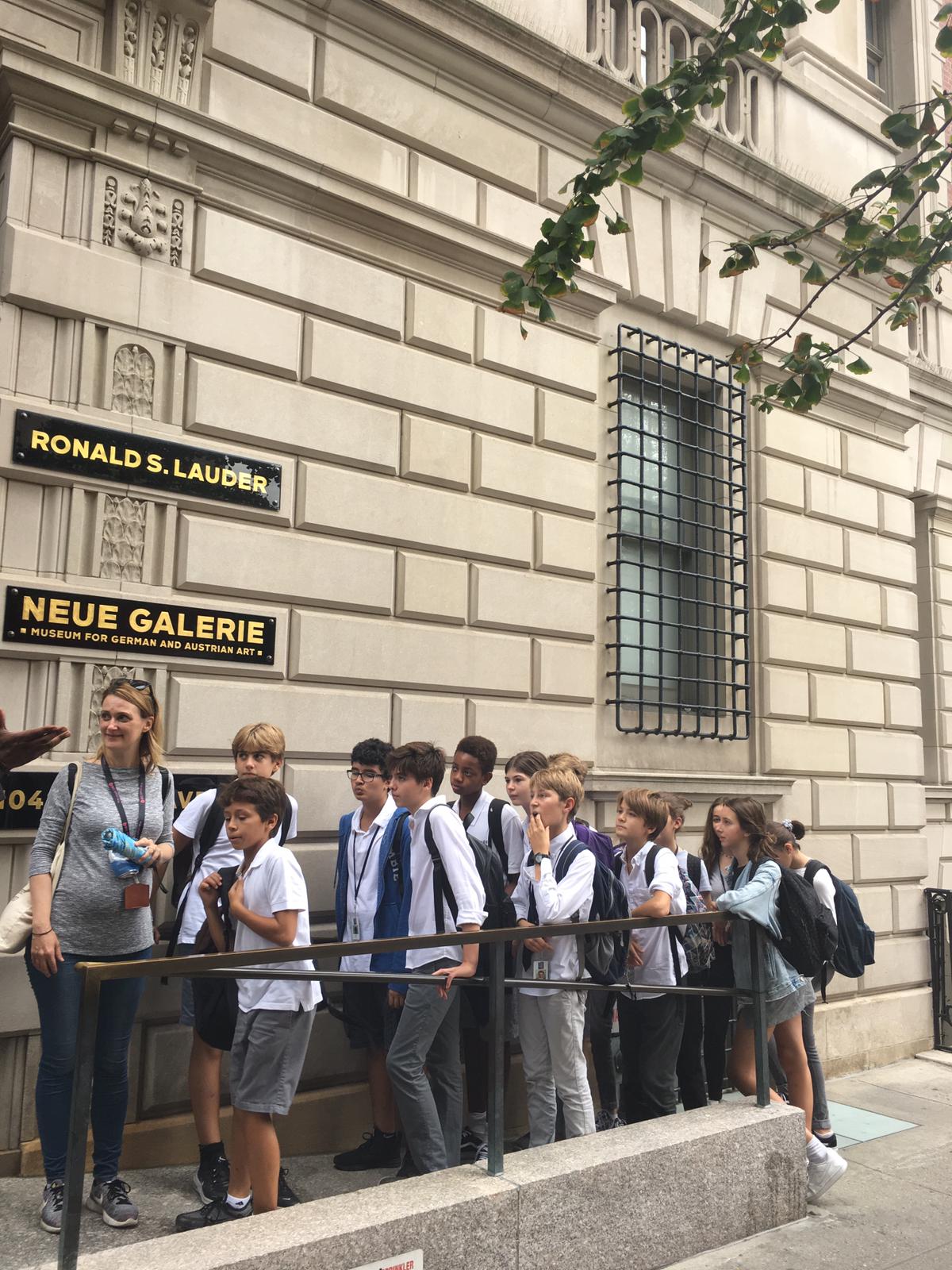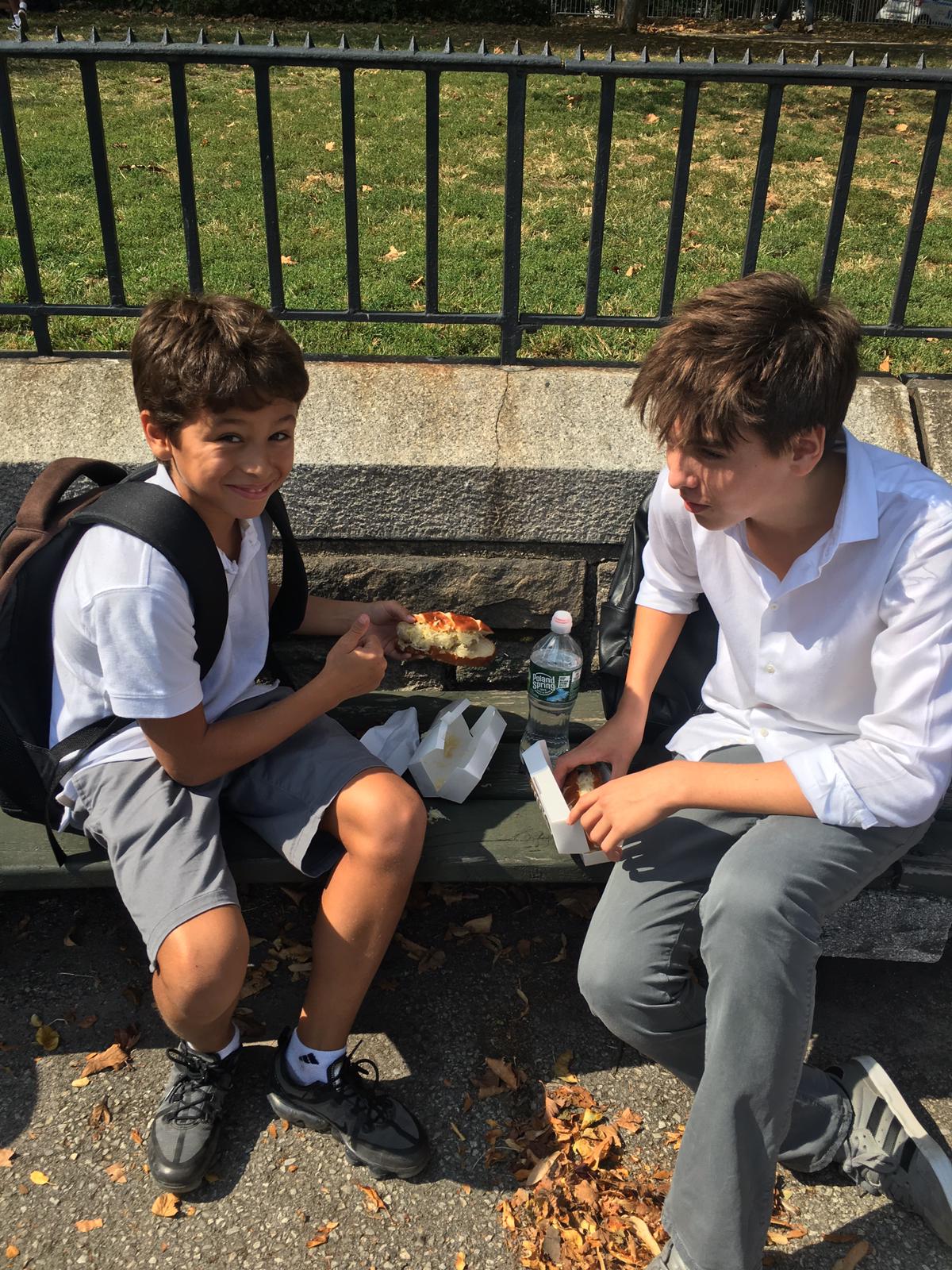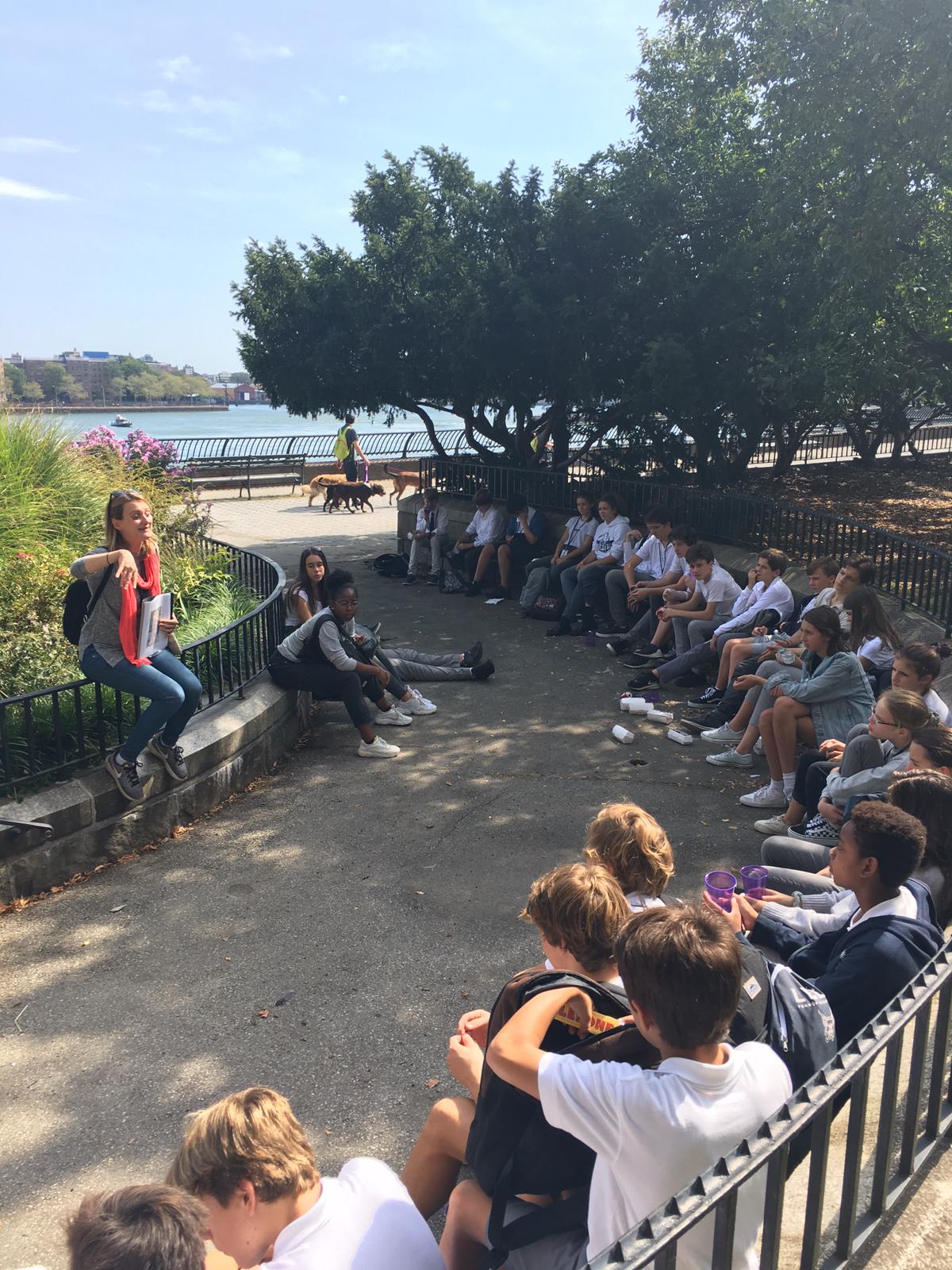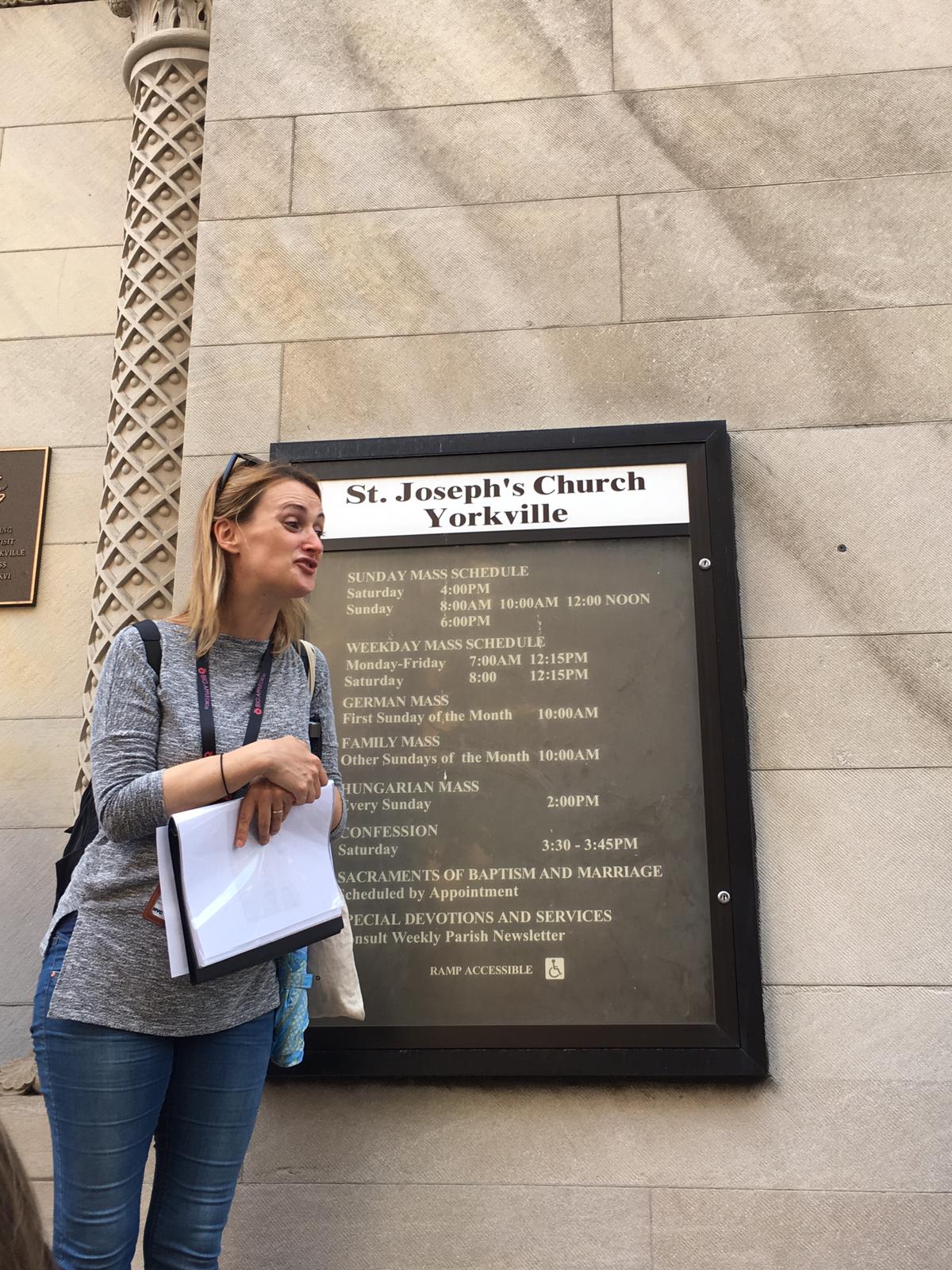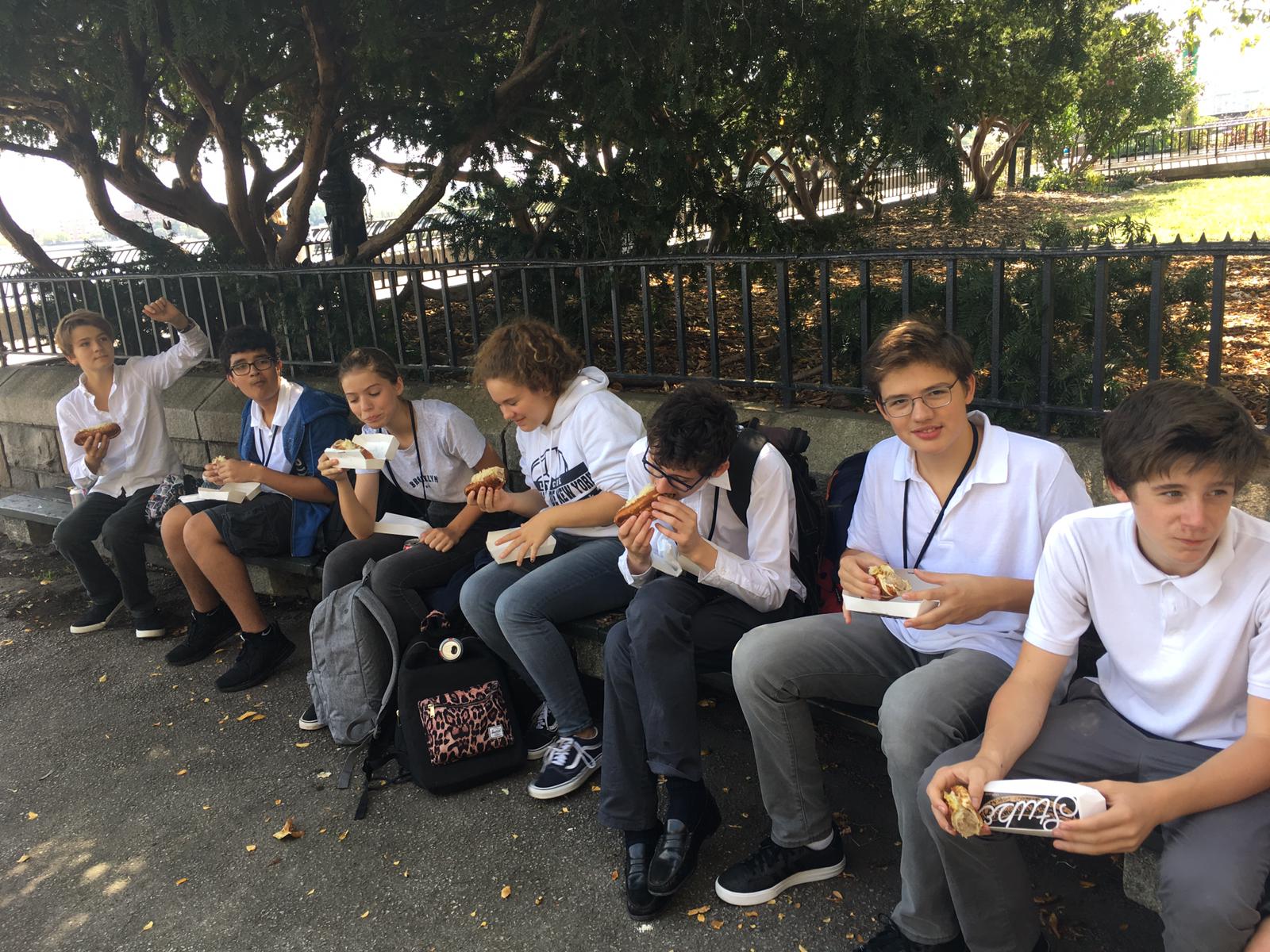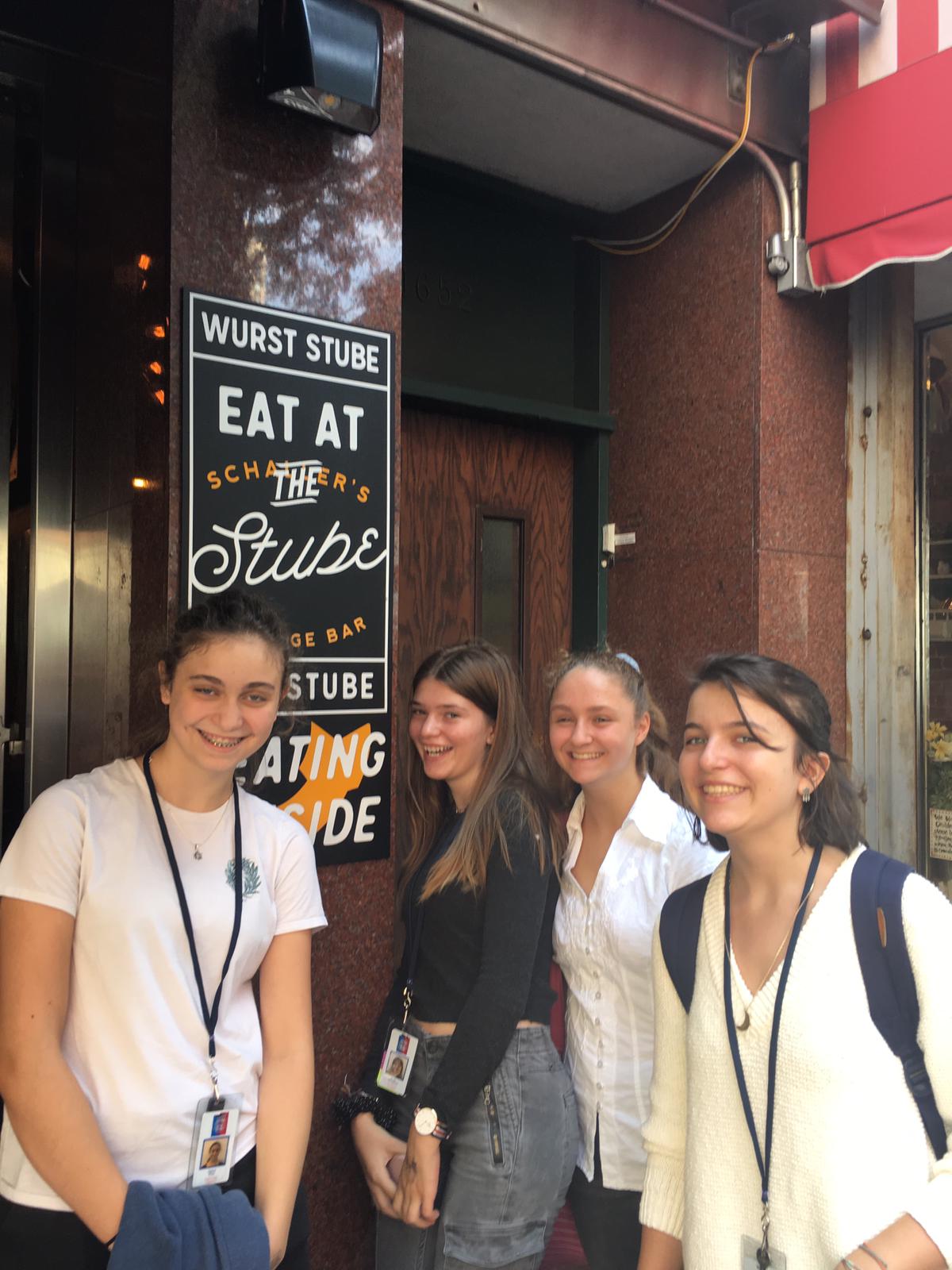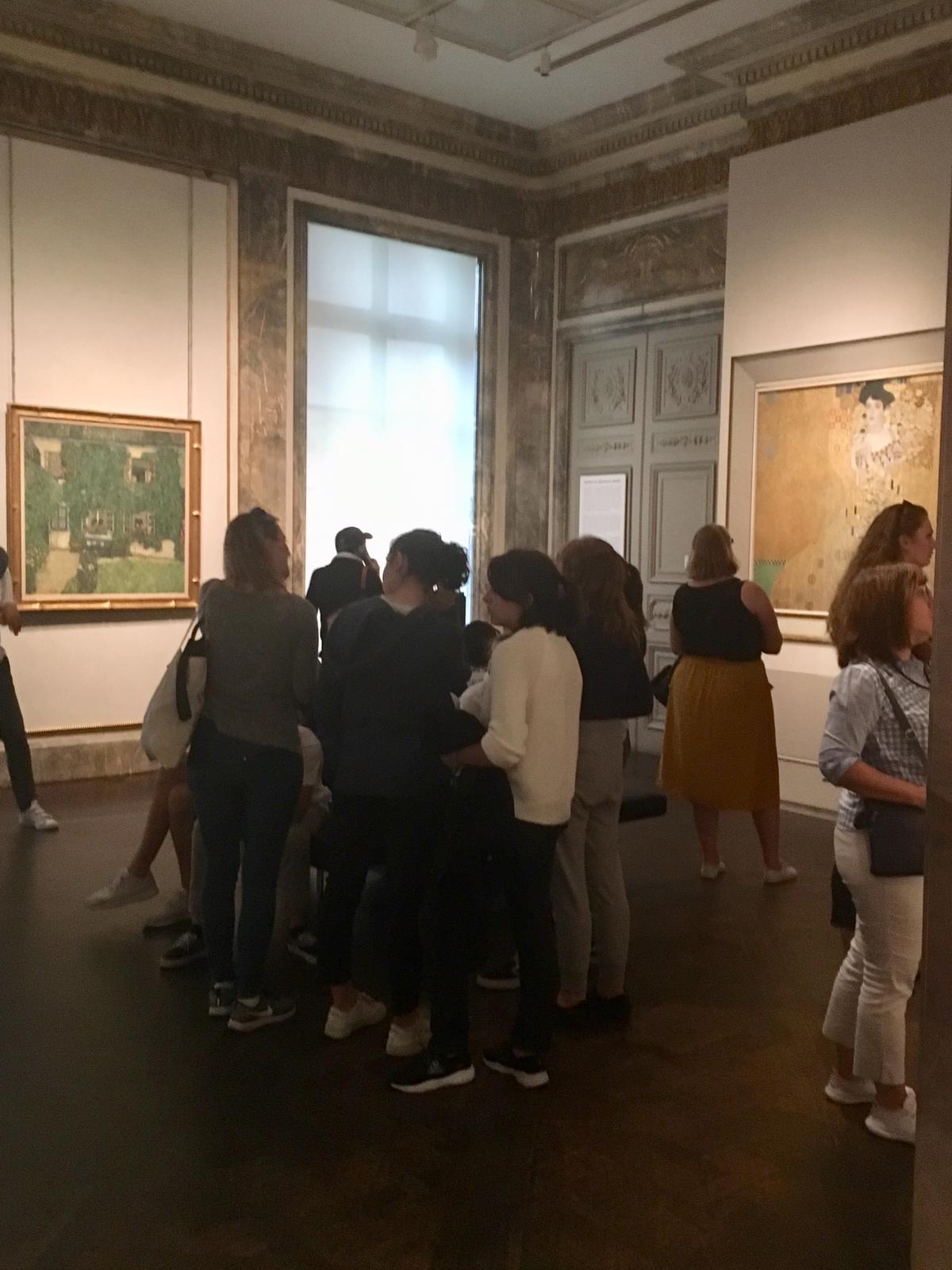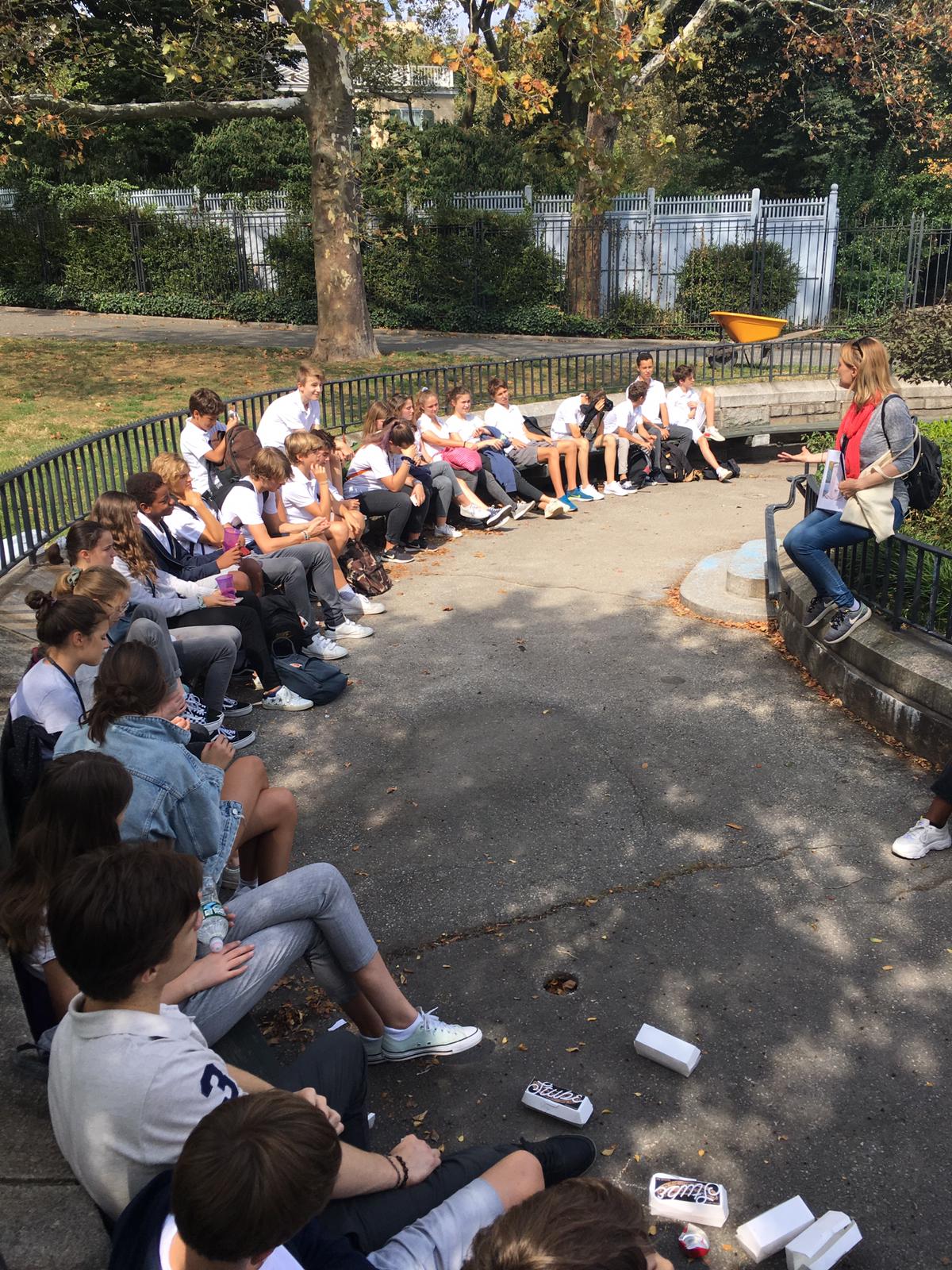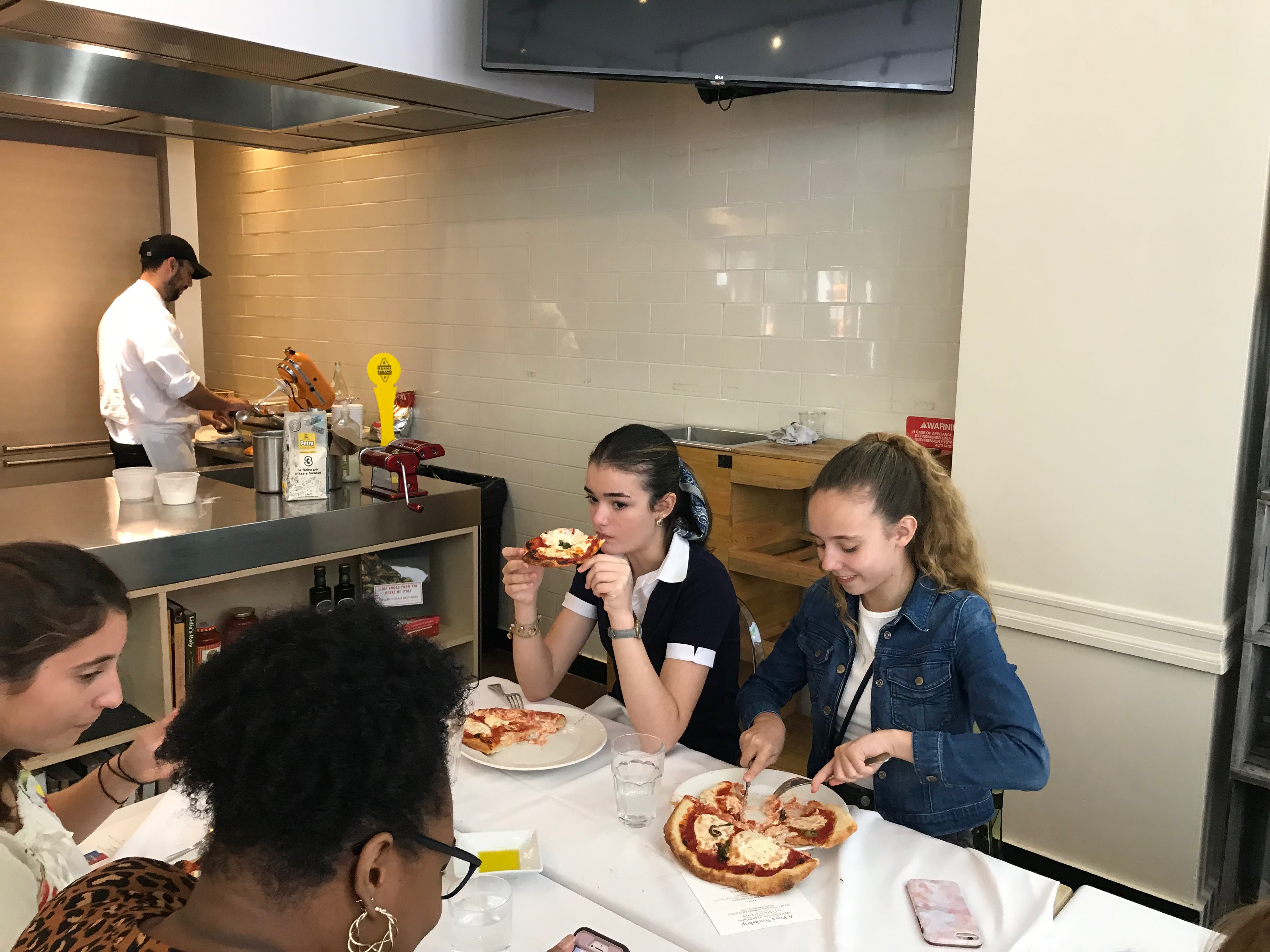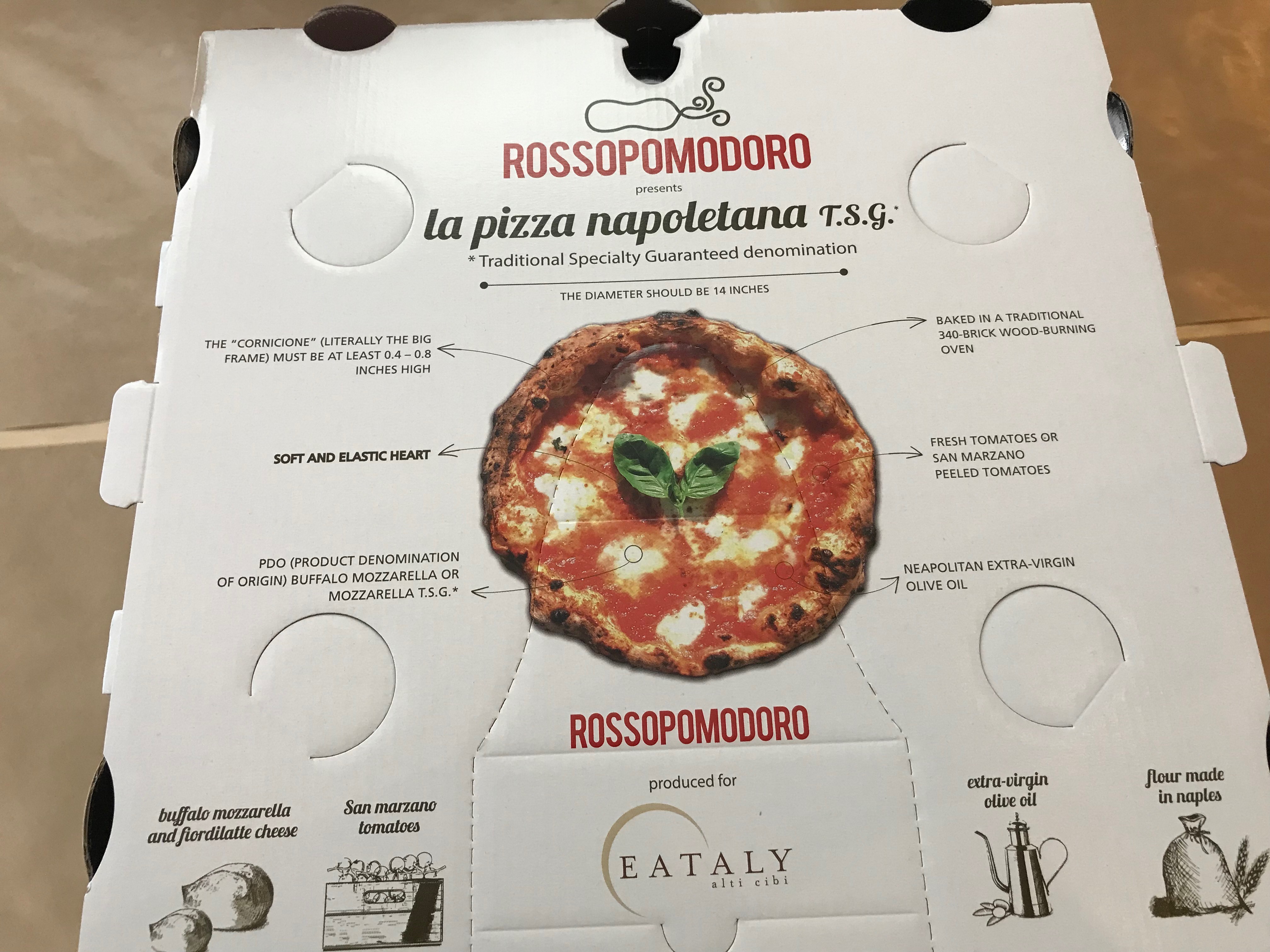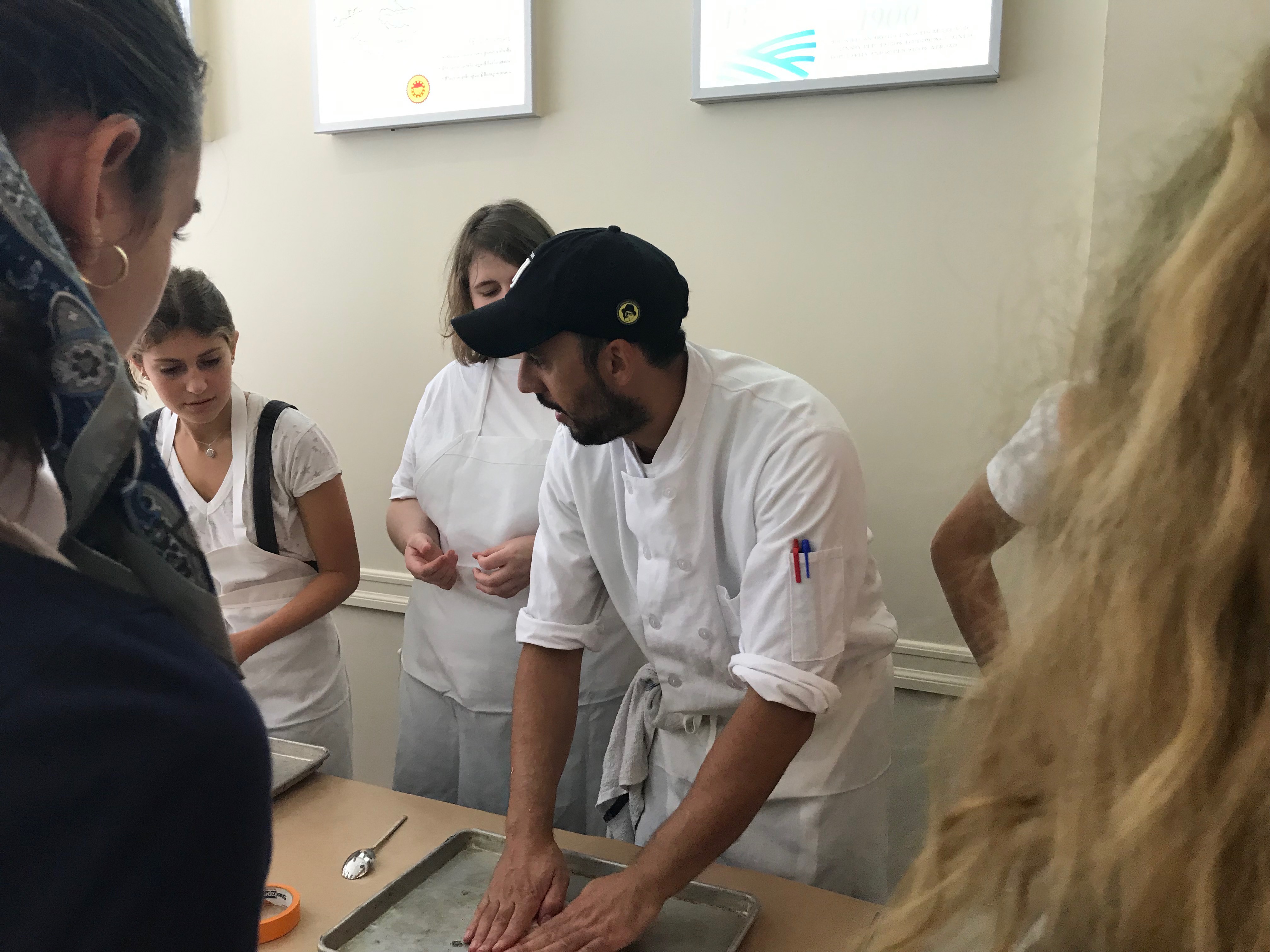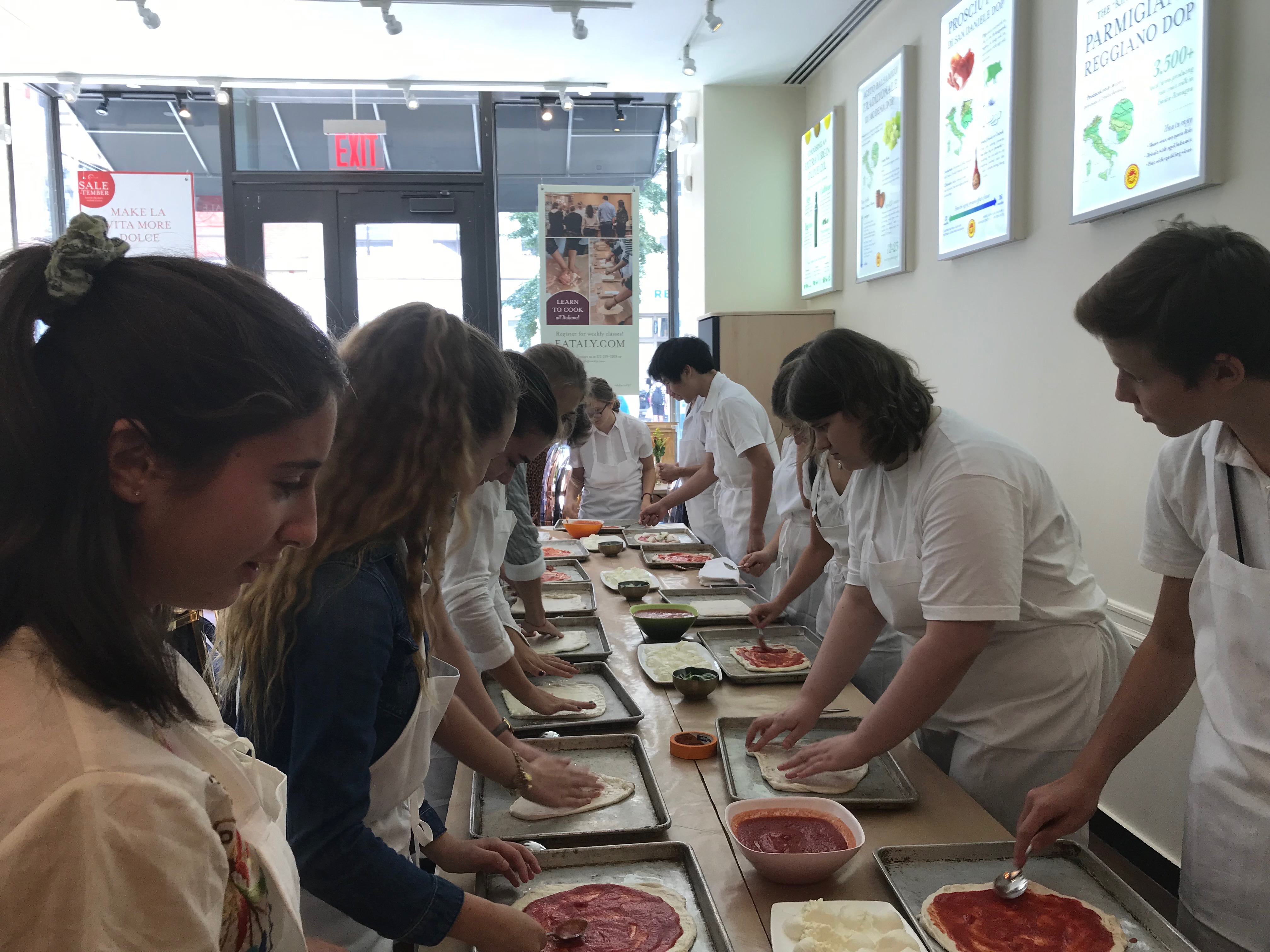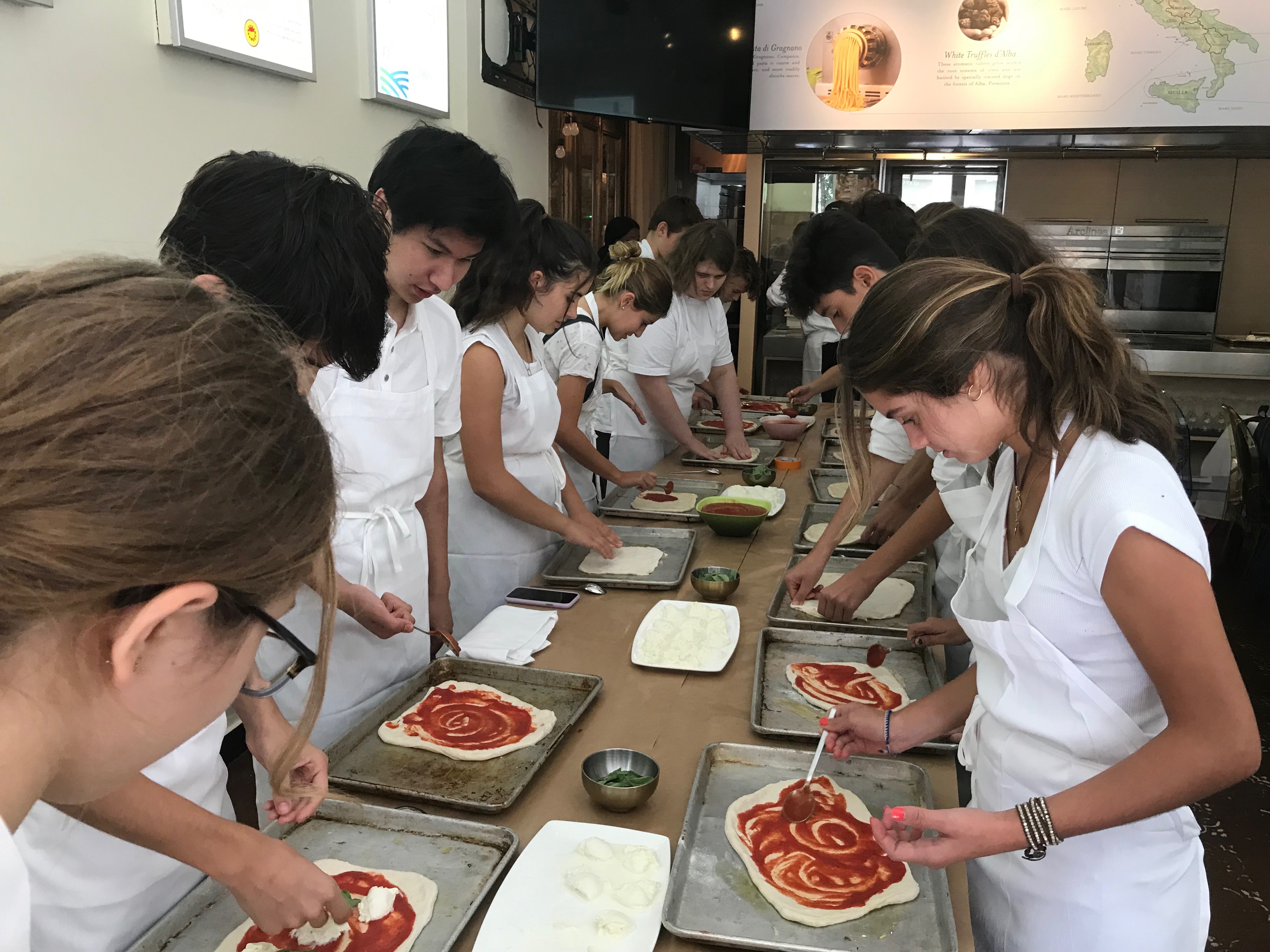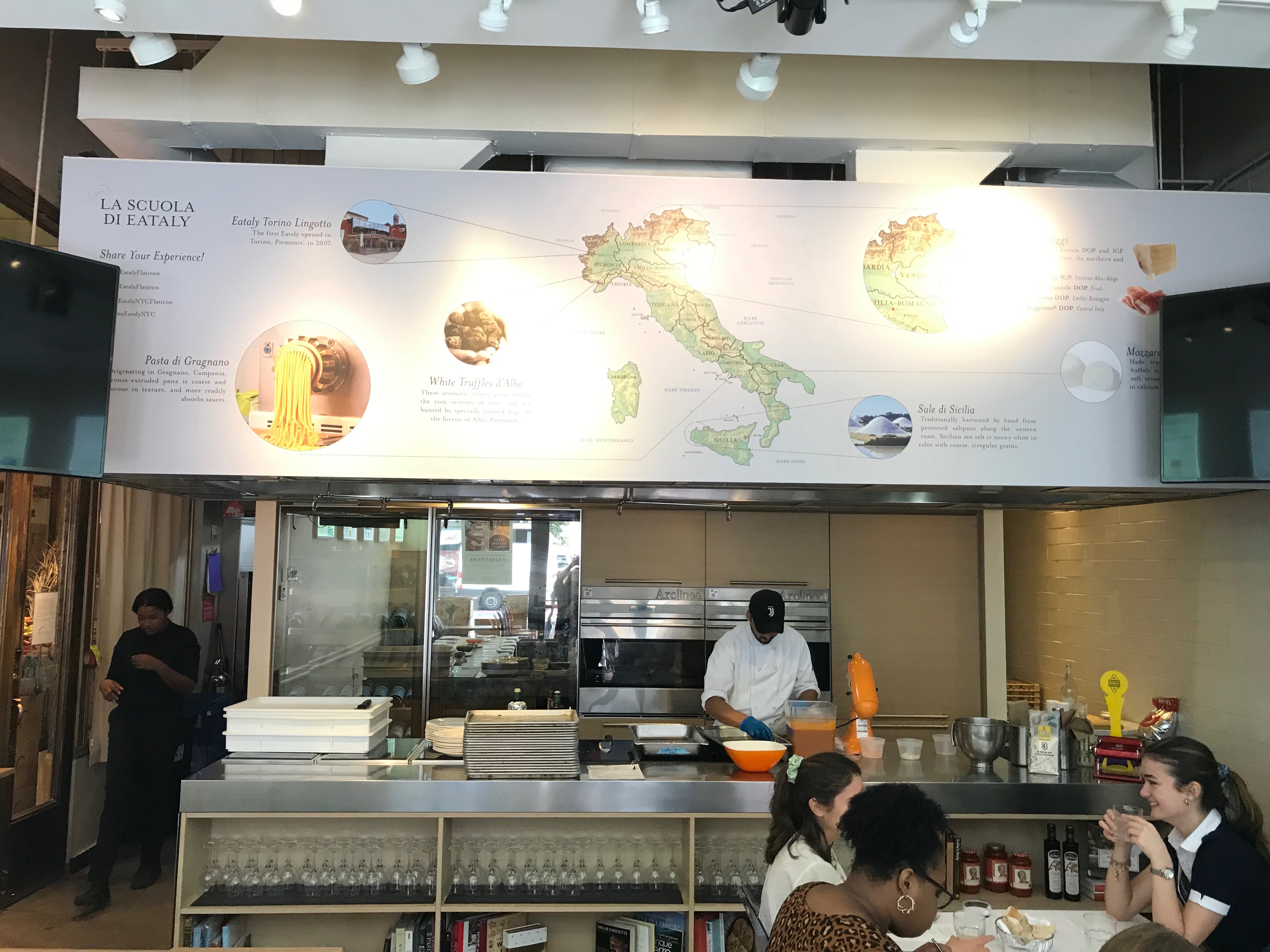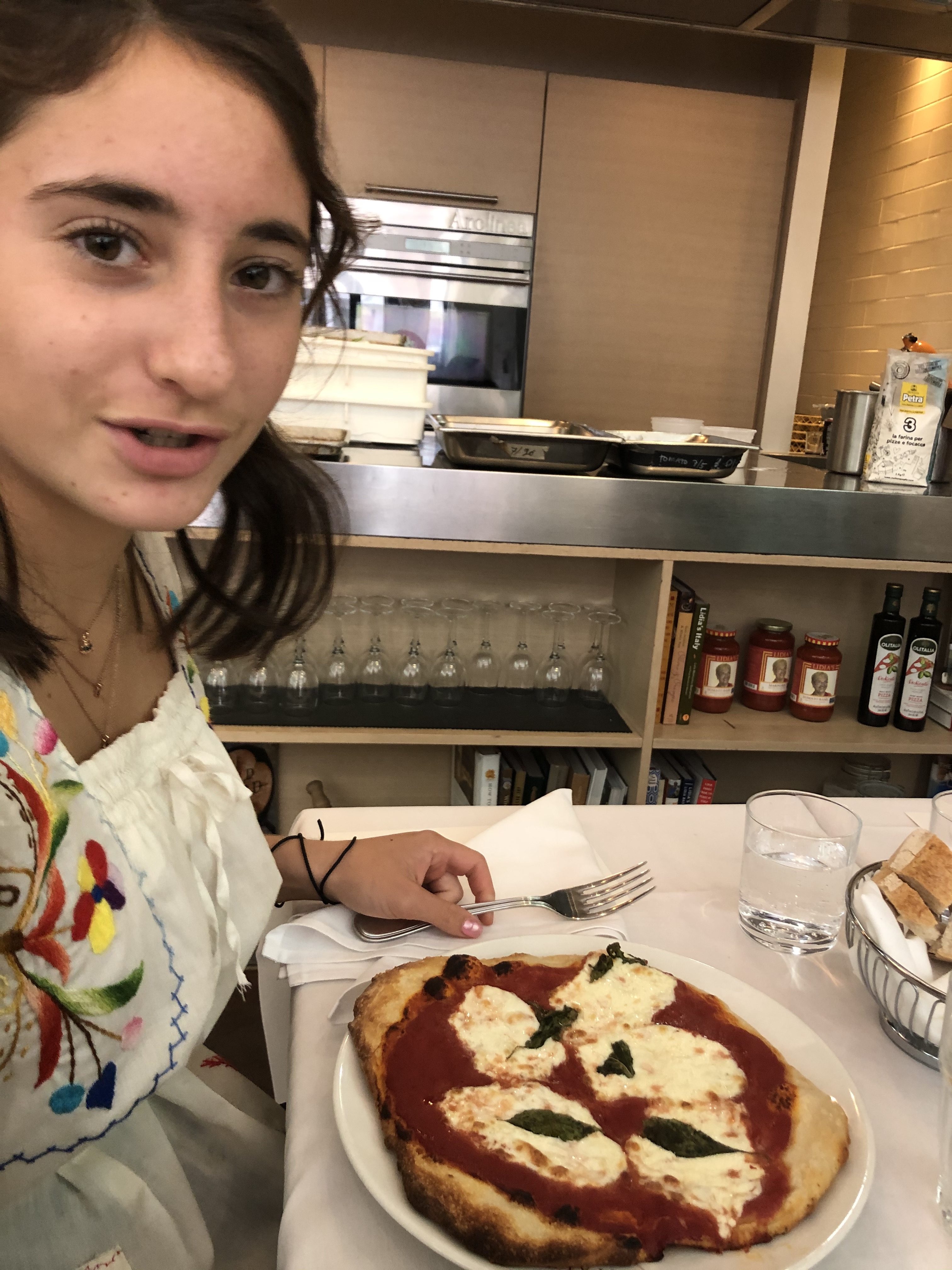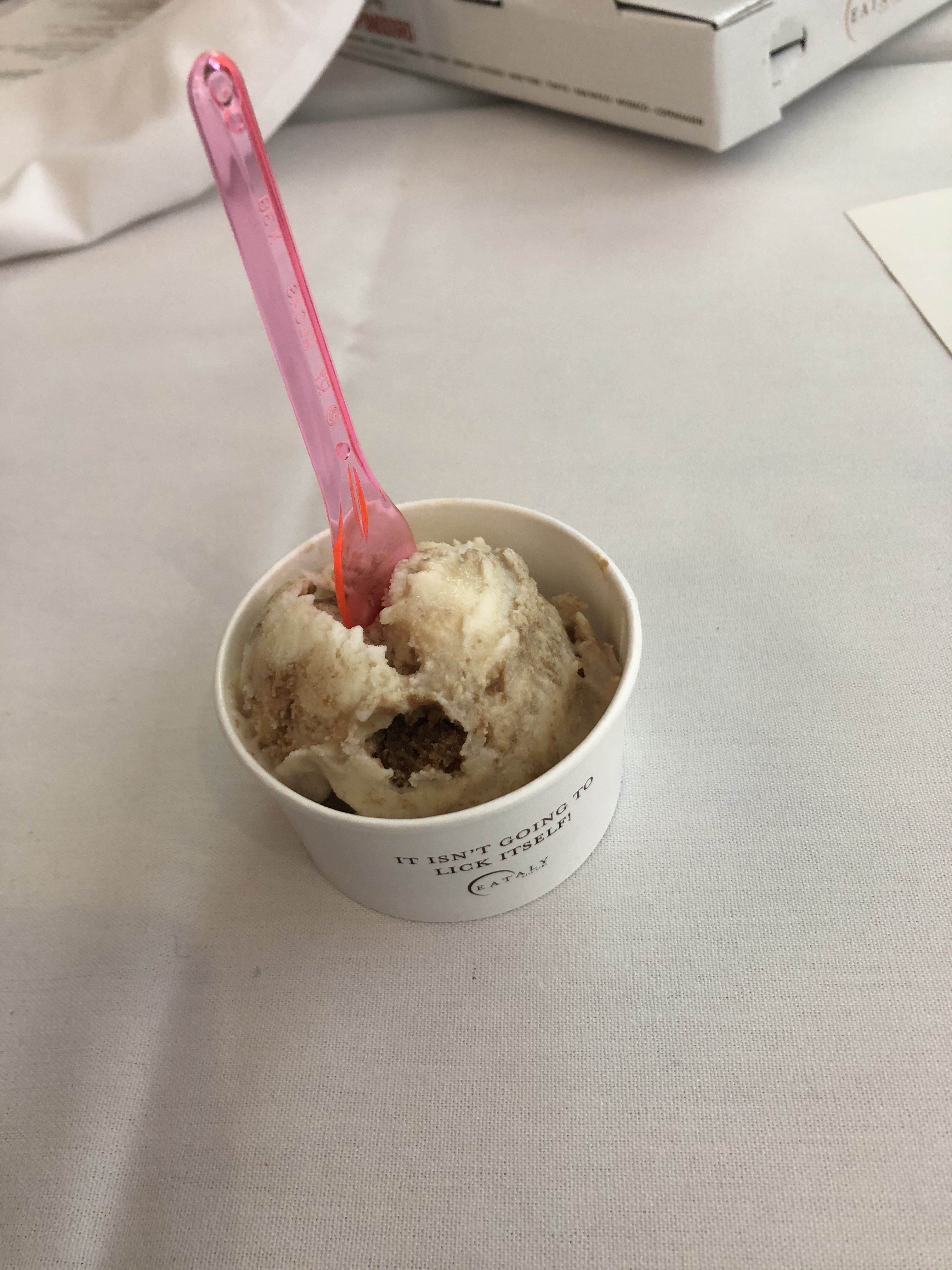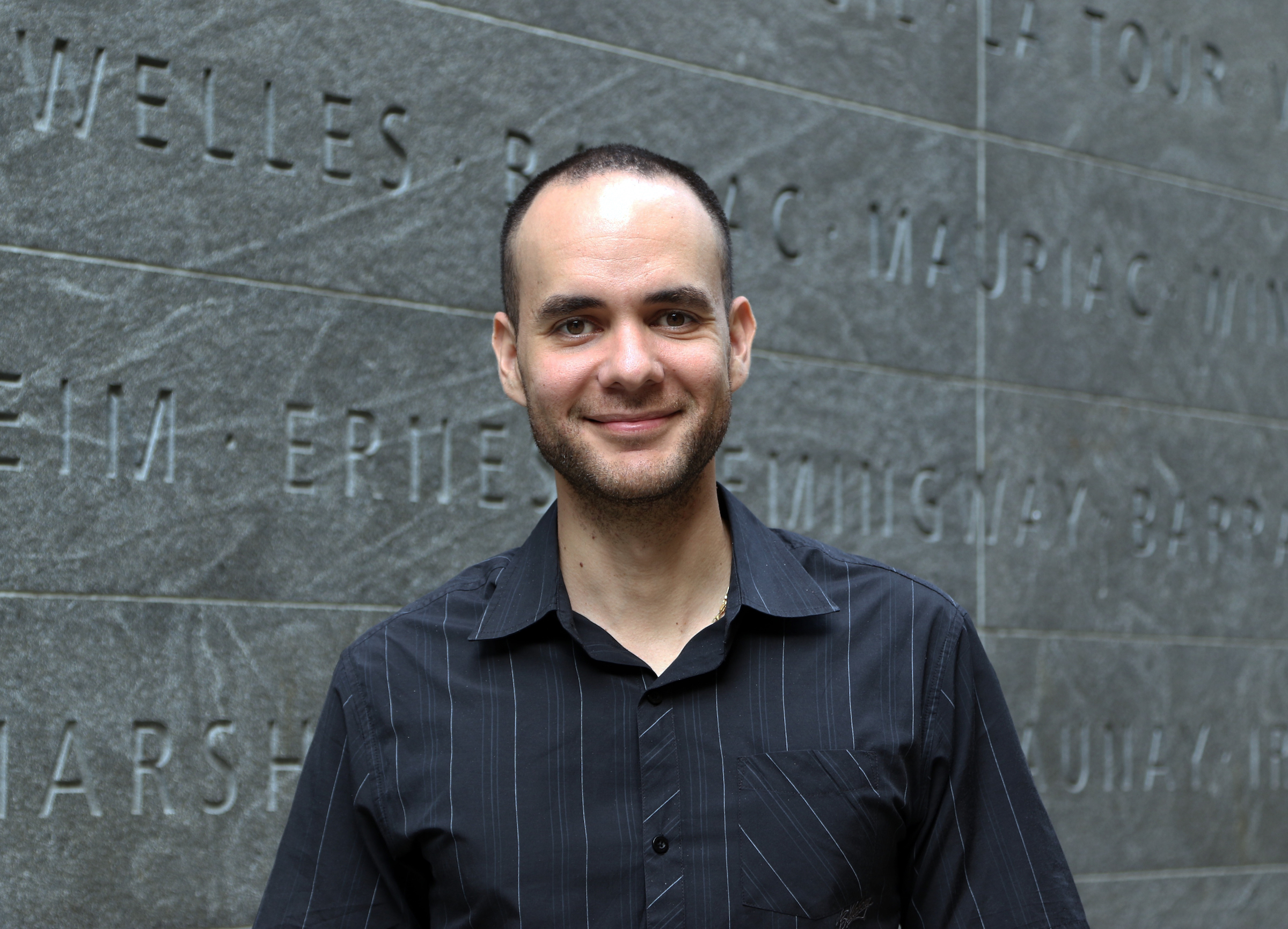On Thursday, September 26, Secondary students in the Lycée’s World Languages Program ventured out into the richness of New York City. German students went uptown to the Neue Galerie in Yorkville, while Italian students went in the opposite direction: down to Little Italy. Spanish classes saw the play, El Quijote. And of course, Arabic and Mandarin students went to the MET, where ancient arts, texts and objects from the Middle East and East Asia are on display.
Here are their reports:

The Chinese Garden Court at the MET is one of the most popular parts of the Asian Galleries. Compared with the imperial garden “Summer Palace” that 3e students visited in Beijing, China, this is the traditional Suzhou-style private garden. This exquisite Garden Court presents a larger world of nature in the universe by displaying miniature rocks, plants, pond and bridge. Miniature plants and bushes suggest ancient trees and forest. Rocks resemble mountain ranges and peaks. Special plants that carry deep symbolic meanings are selected, for example, bamboo that grows straight, bends in the wind but does not break symbolizes a person of integrity and loyalty. Pine trees, which remain green through winter, symbolize “longevity” and the quality of tenacity. While showing poetic and artistic beauty, these plants deliver Chinese philosophical messages that reflect the ancient Chinese people’s aspiration for harmonization with nature.
At the same time, social status in China is very hierarchical. The cultural meanings of doorsills in front of people’s houses play an important part in this. Firstly, the doorsill a symbol of boundary, making a distinction between your own home and the outside world. Secondly, it represents the owner’s class and status; the higher status you were in, the higher doorsill it was. When I take students to China, I try to make them understand the rigidity of the social status.
— Susan Wei (Mandarin teacher, as told to Communications)
On the occasion of the Day of Languages celebrated by the Lycée every year on September 26th, 8th grade, 9th grade and 10th grade students who learn Chinese as a second language had the opportunity to share a traditional Chinese lunch in a cantonese style restaurant with their friends, classmates and some of their teachers.
After this nice and friendly moment, the group went to the MET to visit the Buddhist Art Gallery and the Asian Art Gallery. There, every student was asked to choose a piece of art and to prepare a short presentation about it. Everybody has a great time visiting MET’s wonderful and priceless collection of Chinese antique artifacts and centuries old paintings.
— Maxime Venturin (Mandarin teacher)
*
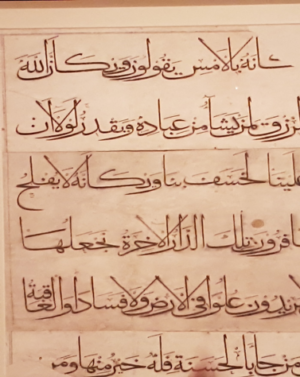
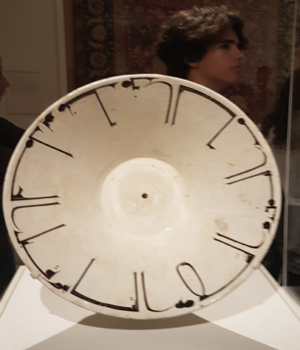
Pour fêter la Journée des Langues, les élèves arabisants du Lycée ont fait deux voyages culinaires et culturels dans le monde arabe. Une première escale, chez Naya, leur a permis d’apprécier les délicieuses spécialités libanaises avant de se diriger vers le MET pour un voyage parmi des chefs-d’oeuvres qui retracent l’histoire de l’art islamique à travers les siècles, les différentes dynasties mais aussi les différentes cultures avec lesquelles les Arabes ont échangé ou celles dont ils ont hérité (la culture grecque, byzantine, persane ou indienne).
La calligraphie qui est apparue avec le besoin de mettre par écrit le texte sacré des musulmans, est rapidement devenue une des constantes et des caractéristiques de l’art islamique jusqu’à nos jours. Elle orne les mosquées, les palais, les vases, les assiettes, les lanternes des mosquées, le cou de ce géant encensoir sous forme animale – que Tarek a l’air d’apprécier particulièrement -, ainsi que ce superbe Mihrâb qui date du 8ème siècle et qui vient d’une mosquée de la ville d’Ispahan en Iran.
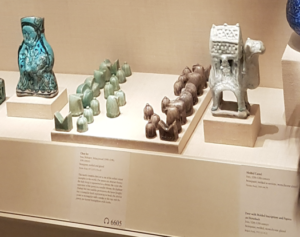 Les élèves ont aussi vu une collection de très beaux astrolabes que les Arabes, grands connaisseurs en astrologie et en astronomie, utilisaient pour mesurer la hauteur des astres et, entre autres, déterminer – en plein désert – l’heure exacte. Les Grecs anciens avaient découvert cet instrument que les Arabes ont perfectionné et ont transmis, des siècles après, aux Européens.
Les élèves ont aussi vu une collection de très beaux astrolabes que les Arabes, grands connaisseurs en astrologie et en astronomie, utilisaient pour mesurer la hauteur des astres et, entre autres, déterminer – en plein désert – l’heure exacte. Les Grecs anciens avaient découvert cet instrument que les Arabes ont perfectionné et ont transmis, des siècles après, aux Européens.
Il en est de même pour ce jeu d’échec que les élèves ont pu admirer. Si vous vous demandez que vient faire un jeu d’échec dans une visite sur l’art islamique, sachez que si les Arabes n’avaient pas transmis, dans leurs cours andalouses, ce jeu d’origine indienne, on ne l’aurait jamais connu en Occident. Pensez à demander aux élèves qui étudient l’arabe au Lycée la triste histoire qui se cache derrière la naissance de ce jeu.
— Rime Abdel Nabi (Arabic teacher)
*
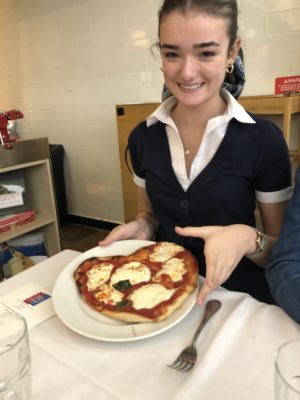 On Thursday September 26, the Italian program celebrated the Day of Languages with a hands-on pizza workshop in Eataly, the famed Italian food hall in the Flatiron district. Sonia Rocca and Portia Morrell accompanied 16 ninth and tenth graders to speak ‘eataliano’ in an authentic culinary and linguistic immersion. Their arrival was greeted by a freshly-baked still hot pizza alla pala, a Roman-style pizza served on a wooden paddle. As a side dish, a delicate seasonal caprese salad that had squash instead of tomatoes. After Chef Leonardo Palazzo and Sonia Rocca demonstrated how to prepare a pizza napoletana, students put on an apron and created their own pizza. They stretched the dough on a baking sheet and decorated it with classic fresh pizza toppings, such as passata, burrata and basilico. A gelato al tiramisu to die for crowned this unique unforgettable culinary and cultural experience.
On Thursday September 26, the Italian program celebrated the Day of Languages with a hands-on pizza workshop in Eataly, the famed Italian food hall in the Flatiron district. Sonia Rocca and Portia Morrell accompanied 16 ninth and tenth graders to speak ‘eataliano’ in an authentic culinary and linguistic immersion. Their arrival was greeted by a freshly-baked still hot pizza alla pala, a Roman-style pizza served on a wooden paddle. As a side dish, a delicate seasonal caprese salad that had squash instead of tomatoes. After Chef Leonardo Palazzo and Sonia Rocca demonstrated how to prepare a pizza napoletana, students put on an apron and created their own pizza. They stretched the dough on a baking sheet and decorated it with classic fresh pizza toppings, such as passata, burrata and basilico. A gelato al tiramisu to die for crowned this unique unforgettable culinary and cultural experience.
— Sonia Rocca (Italian teacher)
*
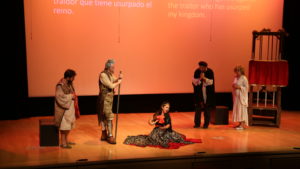 On September 26, the 183 students of Y8, Y9, Y10 and Literature option in Y12, gathered in the auditorium at 1:15pm to attend a modern version of El Quijote, played by the Repertorio español. It was a fun, spectacular moment for students, teachers and staff who had the opportunity to be there. According to Backstage, “ ‘El Quijote’ stresses the absurdities of Don Quijote’s quest, as he attempts to right wrongs and rescue damsels in distress… Don Quijote and Sancho stumble through a series of adventures (or misadventures, as Sancho calls them). Company members never falter, never miss a step. At the same time, the director’s creativity is unbounded.” We agreed!
On September 26, the 183 students of Y8, Y9, Y10 and Literature option in Y12, gathered in the auditorium at 1:15pm to attend a modern version of El Quijote, played by the Repertorio español. It was a fun, spectacular moment for students, teachers and staff who had the opportunity to be there. According to Backstage, “ ‘El Quijote’ stresses the absurdities of Don Quijote’s quest, as he attempts to right wrongs and rescue damsels in distress… Don Quijote and Sancho stumble through a series of adventures (or misadventures, as Sancho calls them). Company members never falter, never miss a step. At the same time, the director’s creativity is unbounded.” We agreed!
— Vaitea Grand (Spanish teacher)
*
 German students went on a German Heritage tour of Yorkville, in order to discover the important German life that existed in our neighborhood many years ago. We saw an old german church, where they still show a german movie once a month in order to keep the german heritage alive. We saw the german supermarket ‘Schaller&Weber’, where you can buy many german delicious products, and we picked up sausages to go. We sat down in the Carl-Schurz-Park (a parc named after the first German American to be elected to the US senate), and enjoyed our picnic in the sun. Our German guide Geradline told us more about the german life in Yorckville, showing us pictures of how German life used to look like in Yorkville. We then walked to the Neue Galerie, a museum of German and Austrian art, and contemplated the beautiful ‘Women in Gold’ painted by Gustav Klimt, and learned a little more about German Art history.
German students went on a German Heritage tour of Yorkville, in order to discover the important German life that existed in our neighborhood many years ago. We saw an old german church, where they still show a german movie once a month in order to keep the german heritage alive. We saw the german supermarket ‘Schaller&Weber’, where you can buy many german delicious products, and we picked up sausages to go. We sat down in the Carl-Schurz-Park (a parc named after the first German American to be elected to the US senate), and enjoyed our picnic in the sun. Our German guide Geradline told us more about the german life in Yorckville, showing us pictures of how German life used to look like in Yorkville. We then walked to the Neue Galerie, a museum of German and Austrian art, and contemplated the beautiful ‘Women in Gold’ painted by Gustav Klimt, and learned a little more about German Art history.
— Laurine Kleitz (German teacher)

About the Author :
Vaitea Grand was raised in French Polynesia in a multilingual environment. He went to college in Toulouse, France and completed his master’s degree in Iberian Studies at the French institute of Madrid. He then passed the French National Education competitive exams, and taught Spanish in high school, middle school, as well as Spanish literature at the Université Paris 3 – Sorbonne-Nouvelle. In 2013, Vaitea joined the Awty International School of Houston where he taught Spanish and French and also became certified as a soccer coach. He joined the Lycée in 2016 as a Spanish teacher, head of the World Languages Department and he is now coaching the Varsity boys soccer team.

